WITH THE HORN



Tips, tricks and considerations for reptile keepers, delivered directly from the Amazon



Is the most endangered genus on our planet due to return to the UK’s waterways? Find out!
There are only a handful of people in the world breeding hippie anoles. Read the full feature now..


EDITORIAL ENQUIRIES
hello@exoticskeeper.com
SYNDICATION & PERMISSIONS
thomas@exoticskeeper.com
ADVERTISING
advertising@exoticskeeper.com
MAGAZINE PUBLISHED BY Peregrine Livefoods Ltd
Rolls Farm Barns
Hastingwood Road
Essex
CM5 0EN
Print ISSN: 2634-4703
Digital ISSN: 2634-4688
EDITORIAL:
Thomas Marriott
DESIGN:
Scott Giarnese
Amy Mather
Follow us

TThis month’s Exotics Keeper Magazine has been another joy to work on. I caught up with two friends, Ad Rad and Adam Trimmings to chat about some of the more unusual reptiles they work with. Both keepers have given us some real insight into their respective species, rhino rat snakes and hippie anoles. These features are jammed full of tips for all keepers of arboreal colubrids and neotropical lizards. We have also reflected on some of our content in recent months and our aquatics articles seem to always focus on fishkeeping. This month bucks the trend a little as we focus on the most threatened group of species on our planet, the sturgeons. I for one, had no idea just how threatened these animals are both globally and nationally and the new Save the Sturgeon action plan might pave the way for a new future for these prehistoric fishes.
Finally, for the last few months now, I have been working from South America and we will be rolling out some of the stories I have produced whilst out here. I joined Herpetologist and Photographer, Axel Marchelie in Amazonian Ecuador and have put together a
few notes for keepers of species that we found along the way. Since then, I’ve joined a few conservation initiatives and look forward to sharing more of this exclusive content over the coming issues.
On another note, the survey initiative is well underway. We have already began publishing some stats and infographics on our socials and continue to work with an independent analyst. A combination of the EK and the FBH survey data will give us an excellent look at exotics keeping in the UK and I look forward to publishing our results!
Thomas Marriott Editor
Every effort is made to ensure the material published in EK Magazine is reliable and accurate. However, the publisher can accept no responsibility for the claims made by advertisers, manufacturers or contributors. Readers are advised to check any claims themselves before acting on this advice. Copyright belongs to the publishers and no part of the magazine can be reproduced without written permission.
Front cover: Two-striped forest pitviper (Bothrops bilineatus smaragdinus) ©Thomas Marriott

Right: Hippie Anole (Anolis fraseri)

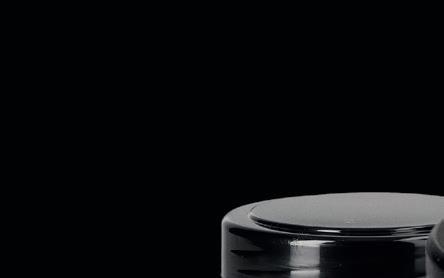


















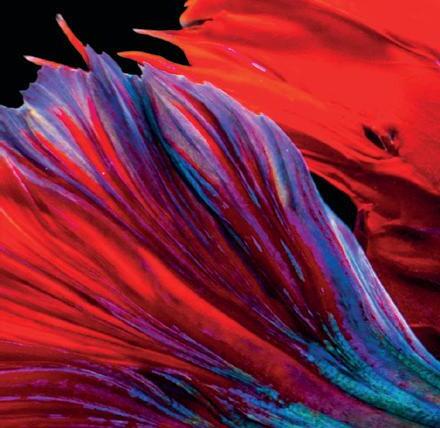
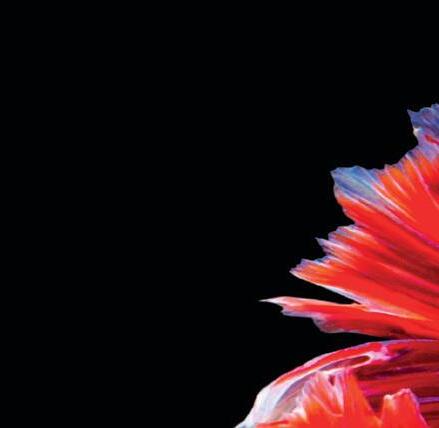

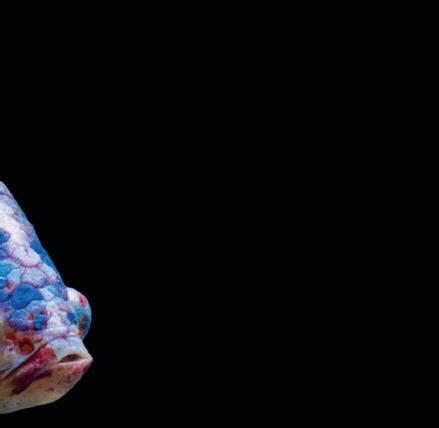





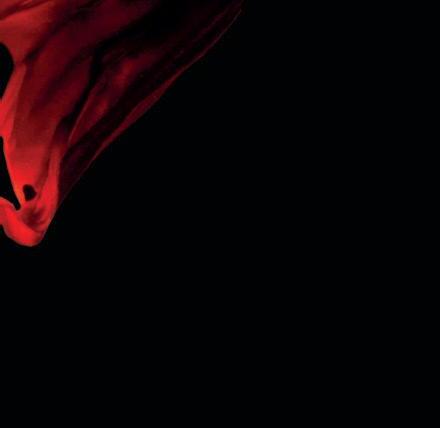

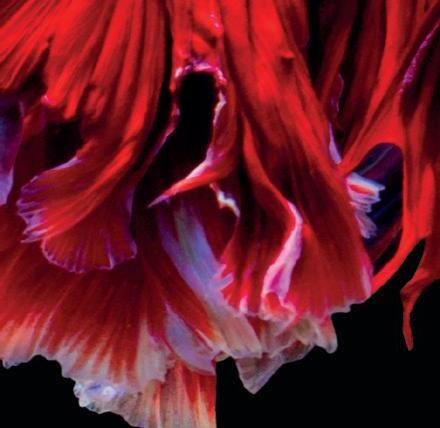




02 06 16 02 EXOTICS NEWS
The latest from the world of exotic pet keeping.
06 SNAKES WITH THE HORN Breeding rhinoceros rat snakes at Birmingham Wildlife Conservation Park.
14 SPECIES SPOTLIGHT
Focus on the wonderful world of exotic pets. This month it’s the European green tree frog (Hyla arborea).
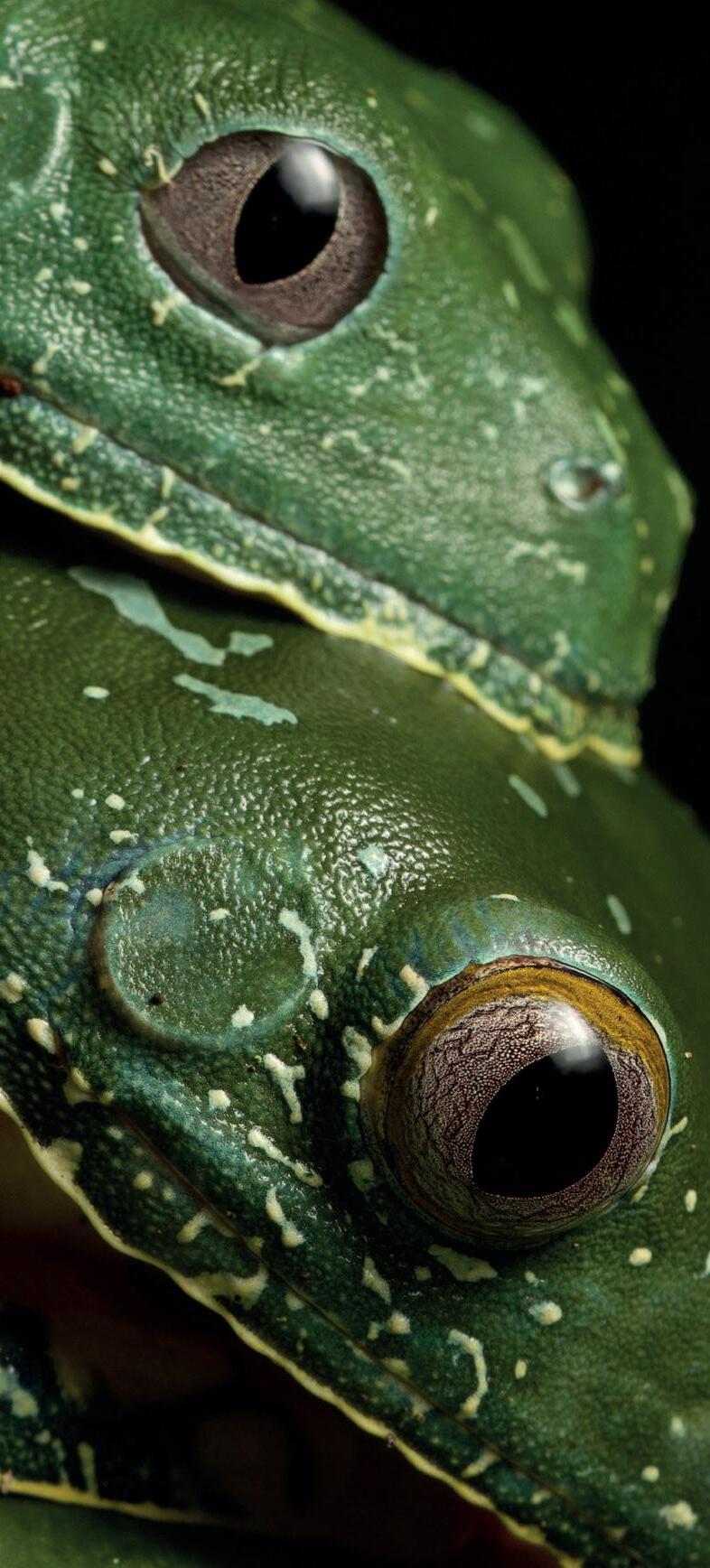
24 32 39


16 BRITISH FISH SET FOR A ROYAL RETURN

Experts publish a roadmap to restore ‘armour-plated’ sturgeon beloved by Royals to British waters.
24AMAZON PRIME
Tips and keeper considerations, delivered directly from the Amazon.
32PEACE AND LOVE Keeping and breeding hippie anoles.

39 KEEPER BASICS: How to Position Electrics Effectively.
45 REPTILES AND RESEARCH


A scientific approach to animal husbandry.
46 SURVEY UPDATE
How are we doing so far?

In a world first, the birth of a rare Livingstone’s fruit bat has been caught on camera at Jersey Zoo.

Wormell, and student Ksenia Potapova captured the unique footage while inspecting mother Nymeria.
“Witnessing a bat birth is an incredible experience and the fact that we caught this on camera is amazing,” said Domonic.
“Bats often have a bad reputation, but they are extremely social and caring animals. Mothers form a remarkably close bond with their infant which is wonderful to watch.”
With only an estimated 1,300 Livingstone’s bats remaining in the wild, the birth makes a vital contribution to efforts to bolster global numbers of the species. The latest arrival makes a welcome addition to Jersey Zoo’s successful breeding programme, with sixteen healthy pups
born into the colony. The programme will safeguard the species in case of a widespread disaster in the wild.
Commenting on the important role the animal plays in the global ecosystem, Domonic said: “Bats are really the most incredible animals and are so important to healthy ecosystems around the world. Hundreds of food plants are dependent on bats for pollination or seed dispersal.

“In the Comoros Islands where the Livingstone’s fruit bats originate from, the ecosystem has been hugely depleted to the point that 50 % of the waterways have dried up. This has an enormous impact on the human population, as well as the wildlife on the islands. Bats are crucial to bringing back these forests and helping these ecosystems replenish.”
The as yet unnamed new arrival will hang off its mother for around 2.5 months when it will start to fly and feed for itself, continuing its positive progress at the zoo.


A new species of Amazonian frog has left its describers speechless thanks to its distinctive markings which have given it a memorable name.
Scinax pyroinguinis, which translates to “groins of fire”, was encountered by Germán Chávez on a trip to the Peruvian Amazon with fellow researcher Wilmar Aznaran. The discovery, unusual in an area of forest so often visited by researchers, was made more remarkable by the stunning appearance of their find.
The orange patterns on the groins, thighs and shanks of the frog “resemble flames”, according to Chávez, but are also a poignant nod to the wildfires that pose one of the biggest threats to the frogs’ habitat.
On the surprising nature of his
discovery, Chávez said: “We could not believe that a medium-sized arboreal frog had passed in front of other researchers’ eyes, and remained unseen.”
They soon realised that the frog was not a common species in the area and were only able to find two others after returning to the site months later. This caused challenges when describing the species, but they were eventually successful, seeing their study published in Evolutionary Systematics.
The first Reptile Show to be held in Northern Ireland will take place on Saturday 8th July in Newton Abbey. Ulster Reptile Show hopes to unite hobbyists from across the UK and Irelend at the Academy Hub, on Mallusk Road and pave the way for more events in Northern Ireland. Sponsored by S&D’s Critter Company, the event is now open for ticket sales (£5 per person, or free for under 12s).
measure animal welfare in zoos. Animal responses are attributed to various factors, and recognising what these may be is important to improve welfare.
"In elephants and birds, it was encouraging to see a reduction in those repetitive behaviours towards something more positive in the presence of people, although the absence of change in the majority of species was also really good, because it suggests enclosure design is changing to better support animals in responding to visitors."

New research has revealed that visitors can have a positive effect on the behaviour of over 250 species of zoo animals.
Animal behaviour researchers from Nottingham Trent University and Harper Adams University discovered the findings in animals including elephants, penguins, jaguars, grizzly bears, polar bears, cheetahs, servals, banteng, cockatoos and black-tailed prairie dogs.
Elephants were found to socialise more with one another during public feeding times, and were more active and likely to forage immediately after. Researchers also saw a reduction in repetitive behaviours indicative of boredom when visitors were present.
Dr Ellen Williams, a zoo animal welfare scientist at Harper Adams University, said: "We have robust methods to
A breeding programme for endangered species at London Zoo has welcomed a new Komodo dragon from Paignton Zoo.
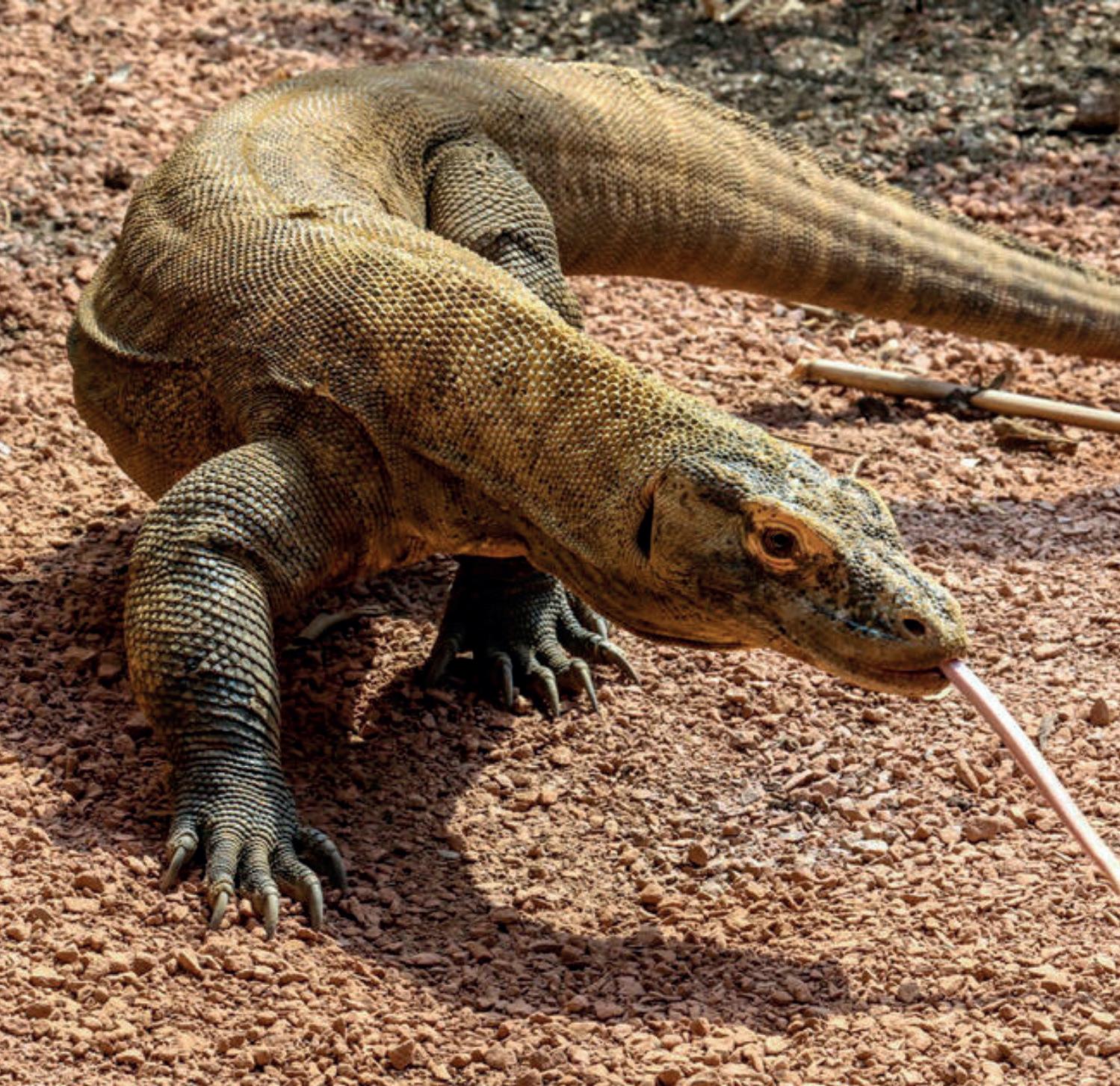
The new arrival, named after the Game of Thrones character, has settled in well at the Attenborough Komodo Dragon House. The enclosure is a temperature-controlled biome which aims to create the conditions of the Komodo dragon’s natural habitat as closely as possible.
Classified as endangered, the dragons face threats such as habitat loss, smuggling and competition from feral dogs in the wild, making programmes like the London Zoo project essential for the species’ survival.
In an update on Khaleesi’s progress since arriving at the zoo, Dragon Keeper Joe Capon said: “Khaleesi is an alert, curious lizard, and has been busy exploring since her arrival – in particular, by digging some pretty impressive burrows on the sandy shoreline.”
A new breakthrough in testing methods for the chytrid fungus has offered new hope in tacking the deadly disease affecting amphibian species across the world.
Over the last 40 years, over 90 species of frog worldwide have been wiped out by the fungal disease Chytridiomycosis, considered to be the deadliest animal disease ever.
The disease is caused by the amphibian chytrid fungus which reproduces in frogs’ skin and negatively affects their ability to regulate salt and water levels, often leading to death.

The fungus originated in Asia and it’s believed global trade in amphibians, as well as international travel, have
caused the disease to spread around the world. With frogs in Australia and America having no genetic resistance to the disease, entire species have been wiped out, including seven in Australia alone.
Testing swabs from the skin of frogs has been possible, however as this test was developed in Australia, it was unable to detect the Asian strain of the disease, significantly limiting its use.
Researchers have now developed a test that can not only detect strains of the fungus from Asia and Panama, but can detect lower levels of infection as well as another strain which affects salamanders.
This means more species can be studied and thereby protected from the devastating disease.
Written by Isabelle Thom.
THIS MONTH IT’S: NCRW
We are donating £1000 to the NCRW when our survey initiative (www.survey.exoticskeeper.com) reaches 10,000 participants. Check out their excellent work as the world’s largest reptile re-homing facility by visiting their website.
www.ncrw.co.uk


Breeding rhinoceros rat snakes at Birmingham Wildlife Conservation Park


The rhino rat snake (Gonyosoma boulengeri) is one of the most unique colubrids on the planet. Found across the tropical valleys of North Vietnam and China, this vibrantly coloured, arboreal rat snake has a prominent scale protrusion on the front of its snout that is still confusing herpetologists. As a species that is now reasonably well established in zoos and becoming increasingly popular in private collections, herpetologists are just now beginning to understand the complex breeding behaviours of this enigmatic species. Adam Radovanovic,
at
Wildlife Conservation Park was gifted two distinct bloodlines of the species from a few friends several years ago. He has now managed to breed the species for five consecutive years, adding new genetic diversity to UK zoo stock.
Several studies have attempted to discover exactly why the rhino rat snake ha /s such a tremendous horn. Early studies by Bangor University found that it is likely used in mating rituals whereby males will use their horns to fend off rivals. Other reptiles such as the lance-nosed chameleon (Calumma gallus) and the Pinocchio anole (Anolis proboscis) use their scaly protrusions as a signifier of health and vigour which, in turn, gives them a better chance of mating. In the case of the rhino rat snake, studies seem to suggest males will “fence” one another. However, subsequent studies identified little correlation between the protrusion and courtship displays, suggesting that its true use is still unknown.
Both sexes exhibit the rostral horn. It is a soft, fleshy set of scales that protrudes from the snake’s nose. “Although males tend to be larger than females, I haven’t seen any difference in the size of the horn” adds Adam. “In terms of the actual courtship around the enclosure, I haven’t noticed any kind of nuzzling of the female or anything that involves the horn.”
“No one really knows why they have a horn. Some people think that it’s for drinking. So, when it’s raining the water should run down the nose and into the mouth. But, there are so many other arboreal species that occupy similar habitats that get high precipitation that doesn’t exhibit this
sort of evolutionary adaption, so it seems like it’s more to do with camouflage.”
“We keep ficus in the exhibit and you can see that the end of the leaves that drop down into a point, look just like that ornamentation on the snake's nose. I will be looking into the exhibit and honestly, it’s really difficult to find the head! The head looks like a leaf, but the protrusion also looks like a bud. There’s this big umbrella of mystery around the species but it could be something very simple. With the lizards of Sri Lanka, there are multiple uses for all their ornamentation like communication, camouflage, and courtship but it could be something very simple with the rhino rat snake.”
The rhino rat snake was formerly categorised in a monotypic genus, Rhyncophis. DNA analysis and other herpetological studies now place the species amongst a wide spectrum of neotropical, Asian Colubrids known as “Gonyosoma”. These snakes vary greatly in size and somewhat in appearance but share similar arboreal behaviours. The rhino rat snake’s closest relative is the recently described G. hainanensis (2021), which also possesses a rostral horn but occupies a smaller range in the Hainan Province of China.
Some species of Gonyosoma are also frequently bred in

captivity, in both private herpetoculture and within zoos. The red-railed racer (G. oxycephalum) is an extremely widespread species across much of Southeast Asia and as such, has been imported into captivity for decades, with a whole host of different localities and available to the keeper. Adam has also bred red-tailed racers for many years, but has noticed some stark differences between “rhinos” and “red-tails”.

Firstly, rhino rat snakes will only lay once a year, whereas other species in the genus (such as the red-tailed racer) can have up to four clutches in a single year. Red-tails are also far hardier, require less fluctuation in temperatures and can tolerate a saturated environment. Rhinos, on the other hand, present more of a challenge to the average keeper and require far more environmental control to thrive within a captive environment.
Birmingham Wildlife Conservation Park houses their pair of animals in a three by three by three-foot enclosure with back access and a mesh roof. The substrate is comprised of coco fibre, soil and fine orchid bark and the entire enclosure is filled with branches, making use of all available space. They use two 2-foot LED strips with a diffuser and a 160W UVB basking lamp that provides UVB and heat in one bulb. This bulb is swapped out with a smaller wattage in the winter months. “Ideally I would like to update the system to halogens and T5’s. As a council zoo, we can’t just change out old systems for new ones and must go through various stages of acceptance, which can be frustrating for us keepers.” Although halogen bulbs cannot be thermostatically controlled, Adam uses a solarmeter and temperature gun to take regular readings. The bulb is positioned above a mesh ceiling in the
enclosure, the total UVI received within the basking spot is between 2 and 3. “The enclosure is large enough that the animals can have a basking spot of 35°C but they can move closer to, or further away from this” adds Adam. “In winter, I drop the spot down to around 28°C and at night, all electricals go off, So, in that particular enclosure, it drops right down to 14°C. That is in keeping with southern China and Northern Vietnam and it is a major trigger for them to breed.”
Humidity is also maintained between 60 – 70% with regular spikes up to 100%. Adam continued: “I’ve put sphagnum moss all over the walls so it holds the humidity well. Sometimes they do spend time on the floor so I need to make sure it’s not too wet. They are susceptible to fungal infections. We’ve noticed it and so have other keepers that have kept their animals too wet. The humidity needs to be high but not saturated. While red-tail racers can be saturated without noticing anything but with rhinos you can definitely see some fungal or bacterial infection creep into the ventral scales. Once you ease off on the humidity, it is sloughed out and it looks fine again, but it is something we need to be careful about with this species.”
During the winter period, Adam adjusts the photoperiod slightly, but also uses the natural seasonal changes as a tool to encourage a “cooling down” period. The exhibit is close to the door of the reptile house and therefore receives a lot of visible light from outside as well as the windows within the off-show area behind the exhibit. Both provide some sense of seasonality alongside the gradual reduction of artificial light within the enclosure. “I am absolutely certain that you can change the lighting all you like, but the barometric pressure changes and lighting that’s coming in from outside are picked up upon anyway” claims Adam.
The two animals were from different bloodlines and were gifted to Adam and are now maintained at the park. This has managed to introduce some new bloodlines into zoo stock. Typically, zoological institutions (particularly those that are involved in wider governing body organisations) cannot simply source animals from private keepers or open imports. This means that over time, the genetic diversity of “zoo stock” becomes limited. Naturally, flagship species with unique lineages become extremely valuable and Adam claims “demand for the rhino rat snakes is quite high”, with some of the juveniles going to various zoos and colleges across the country each year.
Adam continued: “I don’t need to separate them at all which is great. This year, the female fed fine so I just keep them both together. I will feed them both adult mice and small quail. You can give them all sorts, fish, amphibians, other reptiles etc but we don’t have access to that so we switch it up with quail. During winter I’ll give them perhaps one adult mouse or a quail chick once a month. Once they’ve warmed up I’ll feed them perhaps once every 7 – 10 days. My regimes are very sporadic, sometimes I’ll leave them for three weeks or a month. I am just constantly body-scoring the animals. Not just the rhinos, but everything really.”
Mating usually begins in late April. After a reasonably short gestation period of 55-60 days, the eggs are laid, typically in late June. Like (presumably) all snakes, rhino rat snakes will do a pre-lay slough, which is a good indicator that they will soon produce eggs. “We’ve recorded that after their pre-lay slough, it can be anything from 8 to 20 days before she decides to lay” adds Adam. “For indigo snakes (Drymarchon couperi), for example, I’ve pretty much got it down to like 19


days exactly. Other snakes will slough and you’ll get eggs two days later. With rhinos, it does vary quite a bit!”
“Around the sloughing period, they will spend a little more time on the ground. I’m not sure if they do this in the wild, or whether it’s just uncomfortable for the snakes to be on the branches at this time but we’ve noticed the females coming down to the floor and even getting under the substrate. We use a smaller water bowl around this time. !’ve heard from other breeders that the snakes will try to lay their eggs in the water bowl if it’s soo large, so we swap it out to a smaller one just in case. I have noticed they will wrap around the bowl, which is a good indicator to swap it out.”
“Rhino rat snakes will coil around their eggs and remain with their clutch until the keeper removes them. Unlike pythons, they form a loose coil when guarding their eggs which Adam describes as “almost pretzel-y”. “They show no aggression while they are coiling their eggs and don’t get defensive when you take the eggs away, which is something you do get with pythons. But, they do get very defensive afterwards. At this point it’s really important to clean the entire enclosure, remove the smell of the eggs, by replacing the substrate and get back to a normal routine to help the females relax.”
“I’ve never left the eggs in long enough to see exactly why, but I have noticed that rhino rat snakes do, sort of, muscular shivers after they have laid. This usually stops after a few days and one month later, the post-lay slough will take place and she’ll be brand new. Rhinos in general, slough VERY infrequently compared to other snakes! Even babies will slough very irregularly. Babies can go three months without sloughing at all! Most baby snakes will slough every few weeks.”
Eggs are laid in clumps and can be incubated either as one large clump or separated and incubated as separate eggs. “I’ve incubated them in both ways and they’re usually really good. Even if an egg in the centre of a clump goes bad, it rarely affects the rest of the clutch. However, they can be separated, unlike red tail racer eggs which are honestly like they’ve been glued together. After a clutch has hatched, I’ve tried to separate the racer eggs and it’s impossible to separate them.”
“I’ve witnessed them dropping the eggs from the top of the branches, about 2 foot in the air. I have no idea why they do this but I’ve been stood there with my arms out and some soft moss under the snake’s cloaca ready to catch the eggs before. That was quite frustrating because nothing had changed from a husbandry point of view and we even had really good success rates with most the eggs but a percentage of the ones that were dropped seemed to fail part way through incubation.”
There are numerous ways to incubate a clutch of snake eggs, but Adam opts for using an airtight box, set at 27°C (never higher) and exchanges oxygen every few days. “I incubate in two ways. Sometimes I’ll use vermiculite with sphagnum moss around the edge. This lets you keep the moss wet without having to oversaturate the vermiculite. I’ve also incubated over egg-crate. The best thing about that is you don’t have to worry about putting too much water in there. It’s when the keeper starts faffing and thinking ‘I haven’t put enough water in there’ that problems start happening with incubation.”
Rhino rat snakes hatch remarkably quickly for a snake. After around 55 – 56 days, the hatchlings will emerge from their clutch. Health checks are necessary to ensure that the development process has been successful. Arboreal snakes are particularly susceptible to tail kinks, so it is important to do a thorough check. “Skeletal problems are possibly influenced by temperature and haven’t found any since incubating at that lower temperature” adds Adam.

The youngsters are kept in small terrariums with a small UV tube (that provides 1.5 – 2 UVI) and a few bamboo poles to give them the option to climb. Adam continued: “The babies probably spend 50/50 of their time on the ground and climbing. Sometimes they’re up on the branches, other times they’re buried in the moss. We also add a water bowl that they can completely submerge in, which they will tend to do after a feed. I’m not sure whether it’s the weight of the food in the stomach, but they certainly head to the water and bathe for a day or two after their food.”
Rhino rat snakes are notoriously difficult feeders, particularly when they are young. Many keepers will opt to use easily digestible foods such as mouse tails or pinkie heads. Scenting with fish or amphibian scents can also encourage feeding in slightly older individuals. If all else fails, assistfeeding is an option that keepers may have to resort to. “Sometimes it can take a while to get them to feed” explains Adam. “But, they are quite defensive as juveniles which can be an advantage to the keeper. You can almost wind them up until they strike at the food, and then you play musical
Juvenile Gonyosoma boulengeristatues until they take it and swallow it. Sometimes I feed them while holding them with one hand and feeding the pinky in the other. This way they grab it and hold on to it in mid-air. I’ve always used that technique for red-tailed racers and it works a treat. If you just leave the pinky in the enclosure, it’s just not going to work.”
After about a year of rearing the youngsters, they will go through an ontogenetic colour change. The greyishsilver juveniles will begin turning into their uniform green colouration around this time and will soon begin exhibiting more adult behaviours.
The juveniles that have been produced at Birmingham Wildlife Conservation Park have been instrumental in improving our knowledge of rhino rat snakes and provide a valuable tool to teach the public about unusual reptiles. While their mysterious horn may be a rather underwhelming punt at camouflage, their spectacular appearance allows the species to represent the “weird and wonderful” within zoological collections, generating conservation interest for a group of animals often maligned within zoos.
The scientific name boulengeri was coined in honor of the Belgian-British biologist George Albert Boulenger.
Rhino ratsnakes go through ontogenetic colour change. As they mature, they will change from a drab greyish colour to a blueish green at around 14 months of age. However, in rare cases, the snake may maintain its subadult colouration for life.

Scientists still do not know exactly why the rhino rat snake has a horn.
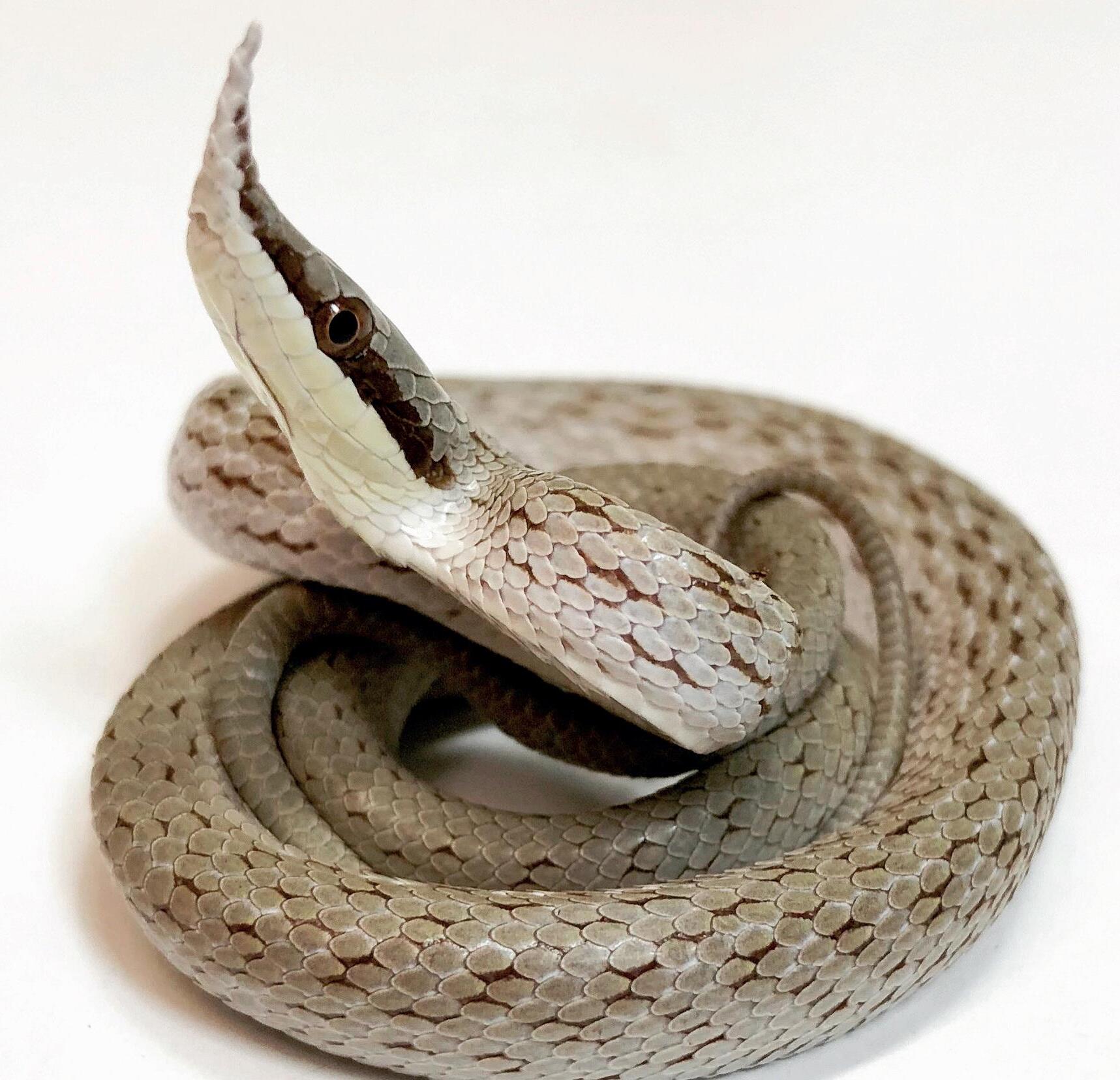
The Gonysoma genus has a history of being fluid, with new scientific discoveries continually shifting the species that belong to it.
Gonysoma species are sometimes referred to as “racers”, “rat snakes”, “ratsnakes” or in the case of boulengeri, “the long nose snake”.





The European green tree frog (Hyla arborea) is an arboreal frog originating from parts of Europe and West Asia. As such, this tree frog can be housed exceptionally well in greenhouse enclosures. Although this hardy species was once very popular in the early days of herpetoculture, many hobbyists began favouring more exotic species. Now, outdoor and semi-outdoor vivaria are becoming increasingly popular for their wealth of both welfare and economical benefits and the European green tree frog is also becoming more popular amongst keepers.
It is a relatively small frog and rarely exceeds 3-5cm in length. It is highly variable and has green, yellow and brown colouration that can change as the frogs mature. This species can easily be identified by its lateral stripes and the fact that across much of its range, it is the only species of true “tree” frog. Like many widespread species, taxonomic developments since its early description back in 1758 have found that H. arborea is a species complex comprised of several subspecies.
European green tree frogs are great for beginner reptile hobbyists as they are very hardy. A secure greenhouse environment with a misting system and live plants can make for a rewarding and natural enclosure. Polycarbonate panels should be used where possible to allow UV through, but as these frogs are nocturnal, a single UV transmitting roof panel should be sufficient. The
greenhouse should also be broken into smaller vivaria with polycarbonate panels to avoid losing the animals in such a large environment.
Those that opt for indoor enclosures can house this frog in a glass terrarium of around 45x45x60cm for two adults to allow them to provide enough room for an appropriate temperature gradient. An amicable ambient temperature should be 18-25°C, however they are very hardy frogs and can survive (perhaps even thrive) in much cooler temperatures providing there is a source of heat. In outdoor enclosures this would come from a sunny spot and in outdoor enclosures, this should be in the form of a spot bulb. Both enclosure types require the provision of UVB. Humidity can also fluctuate throughout the day between 60-90%.
Spray the enclosure twice a day with water that has been left overnight (or treated) so that harmful toxins such as chlorine are evaporated. A shallow bowl of water should also be given. European Tree Frogs will eat most insects such as crickets, locust and mealworms. They should be fed daily, preferably in the evening as they are nocturnal.
Have you seen any disease, noticed unusual symptoms, or had unexpected deaths in your tadpoles?
www.pro-rep.co.uk


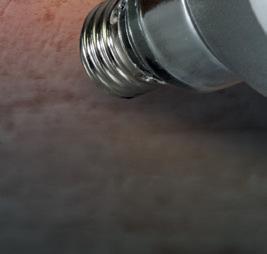









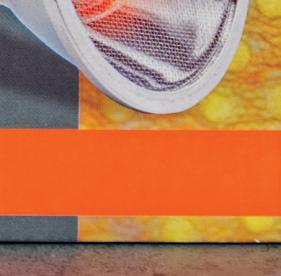


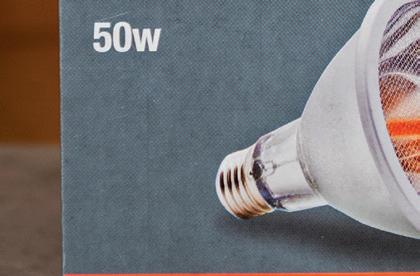









Are your tadpoles bloated – maybe with pink or yellow discolouration around the abdomen?




Disease in your captive tadpoles?



Have you seen any disease, noticed unusual symptoms, or had unexpected deaths in your tadpoles?






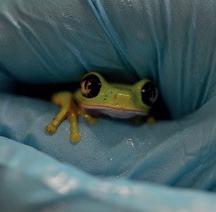

Are your tadpoles bloated – maybe with pink or yellow discolouration around the abdomen?





Have you observed any change in their behaviour, such as: sudden and erratic movements, swimming in circles, loss of equilibrium, sluggishness, floating at the surface or death?
Have you observed any change in their behaviour, such as: sudden and erratic movements, swimming in circles, loss of equilibrium, sluggishness, floating at the surface or death?

Researchers at the University of Oxford need your help. They are trying to track the spread of a newly identified disease of tadpoles. If you suspect that your tadpoles are showing signs of the disease symptoms mentioned above, please make contact at http://tadpole-doctor.co.uk.

Researchers at the University of Oxford need your help. They are trying to track the spread of a newly identified disease of tadpoles.

If you suspect that your tadpoles are showing signs of the disease symptoms mentioned above, please make contact at http://tadpole-doctor.co.uk


http://tadpole-doctor.co.uk
























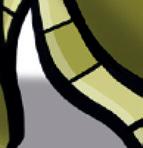

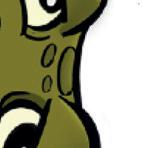






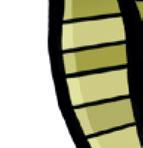













































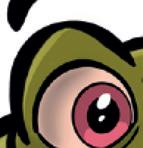


Experts have published a roadmap to restore the Critically Endangered European sturgeon (Acipenser sturio) to British waters.
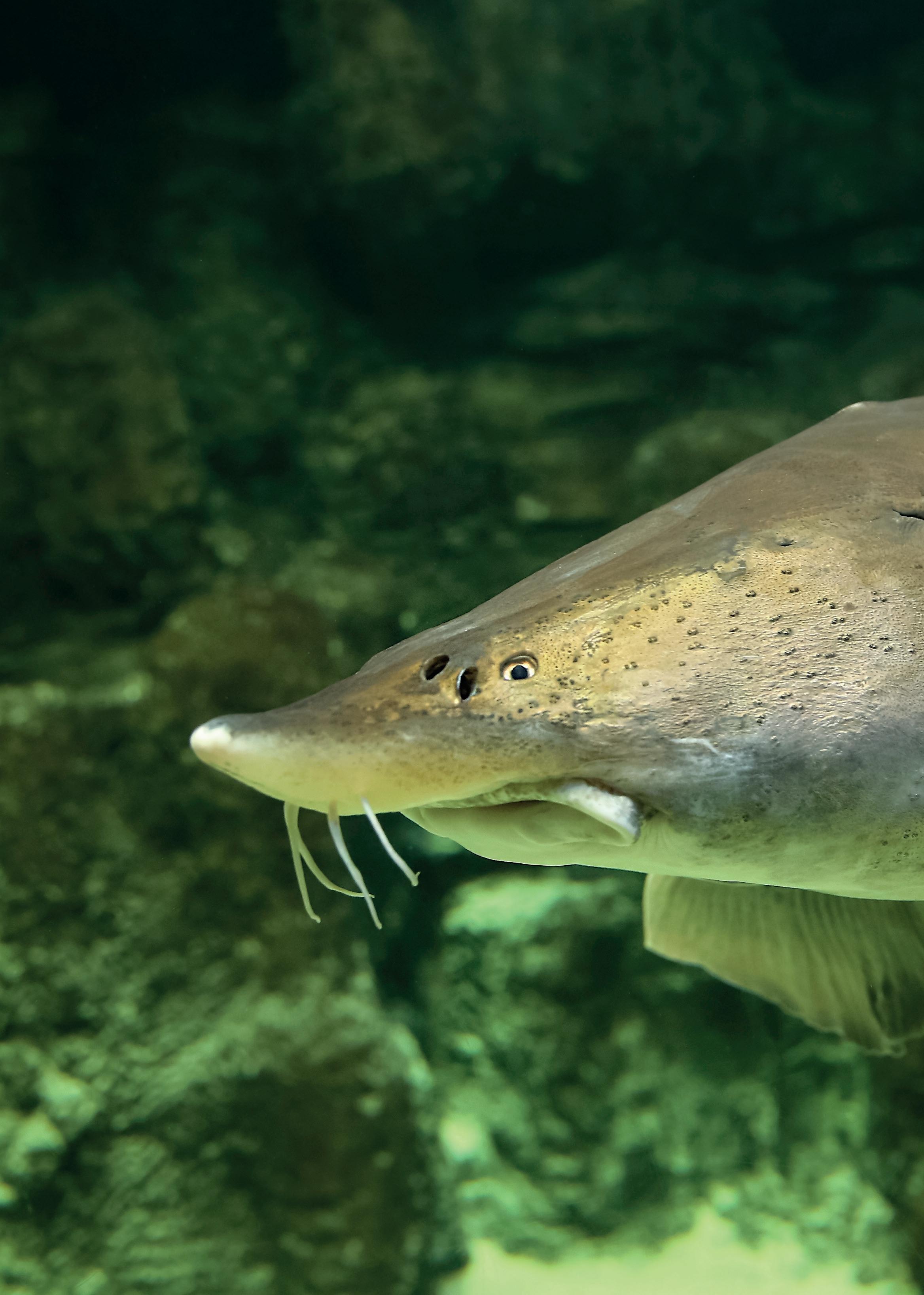

The sturgeon is an ancient armour-plated fish that once roamed the UK’s waterways. Two species of sturgeon, the European (Acipenser sturio) and Atlantic (Baltic) sturgeon (Acipenser oxyrinchus) used to be common in the UK’s fresh, estuarine and marine waters. Sadly, neither species has not been seen in the UK since 1994. Despite once being declared “royal” by King Edward II, human threats including overfishing and the blockading of migration routes have driven these iconic species to extinction in Britain. Once widespread across Europe’s coastal regions, the European sturgeon is now Critically Endangered and has been extirpated from most of its range. However, a new initiative is aiming to bring this species back to the UK.
Over 60% of sturgeons are Critically Endangered or Extinct in the Wild and all 18 species are threatened with extinction, making them the most threatened group of species on the IUCN red list. They are typically very large, unique fishes that exemplify their 200-millionyear lineage. They can live up to 100 years and do not reproduce annually, meaning that the over-harvesting of “authentic” caviar not only decimates populations but prevents the recovery of numbers for potentially many years. Most sturgeon species are migratory animals that rely on delicate ecosystems spanning many miles to reach their spawning grounds. If these are compromised entire populations can fall to the brink of extinction. Sadly similar
threats face all species of sturgeon worldwide, from the expansion of dams in North America to the pollution of waterways across Asia.
The European sturgeon can reach up to 5m in length, making it the largest freshwater species in Britain. Despite their enormous size, they are bottom feeders and consume a diet of molluscs, mussels and crabs. The European sturgeon was once found all over the UK but the last official record was a capture in River Tywi (Afon Tywi) in Wales in 1993. Archaeological records suggest hunting of the sturgeon began during the Bronze Age and were, at one point, a huge part of ancient Britons’ diets. However, the greatest decline in numbers happened once
industrialization took off and waterways were permanently altered by weirs and dams.
Steve Colclough, Chair of the Estuarine & Marine Specialist Section at the Institute of Fisheries Management added: “We now have over 5,200 records of sturgeon in rivers, estuaries and coastal waters all around the UK, since at least 1700. Our waters clearly formed part of the natural range of these great migrators. Until recently, the numbers visiting us have been so low that these were only recognized as occasional vagrants. In the 18th and 19th centuries many fish were captured in our rivers and in some cases where they were not offered to the crown, they were removed and destroyed as strange exotic sea monsters. Now we know better, we can help conserve these flagship species for future generations to see.”
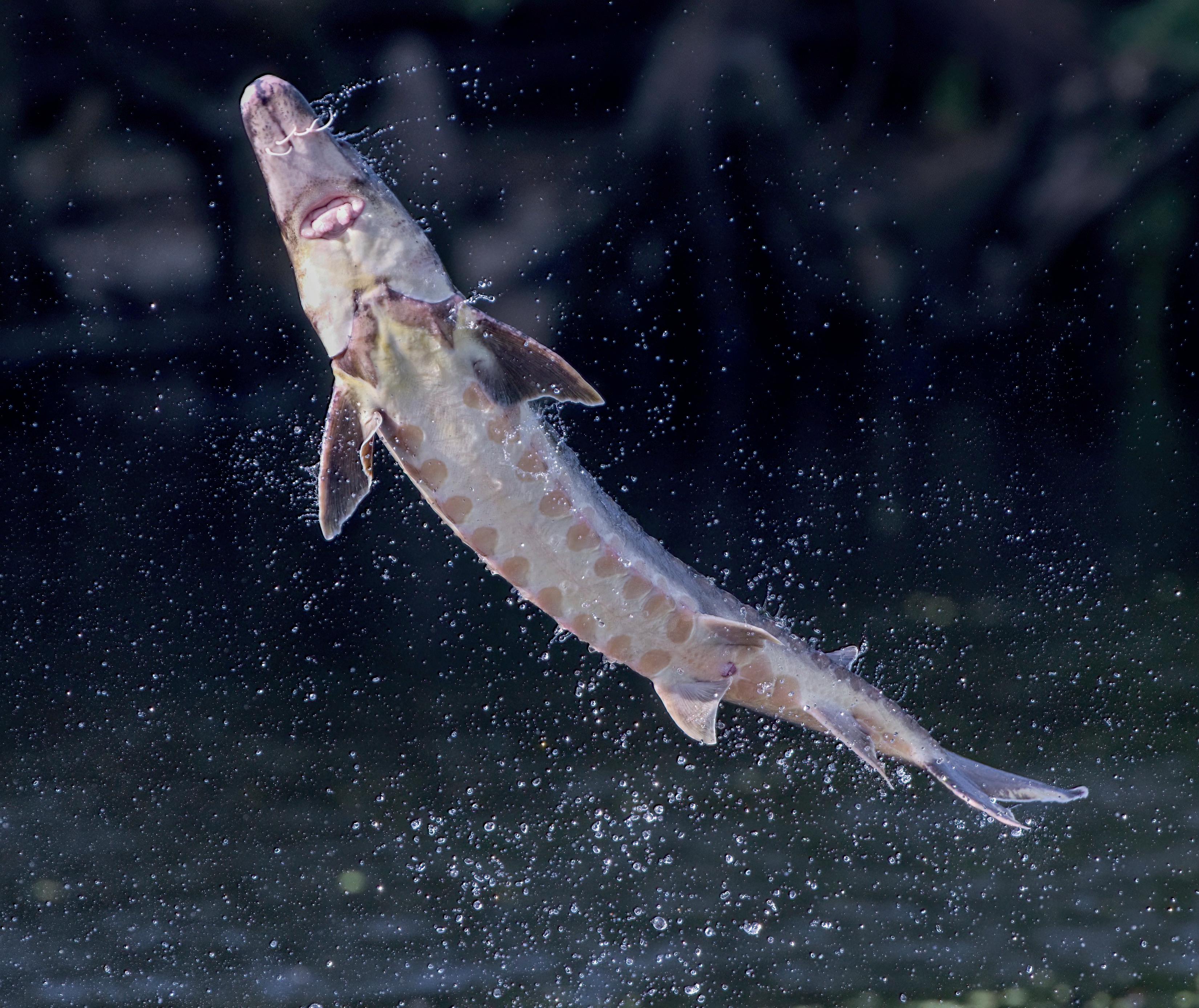
European sturgeon begin life as tiny eggs, attached to the river floor. After around four days, the eggs hatch and the 4cm long larvae emerge. These tiny neonates absorb their yolk sac over six days, nestled amongst the riverbed avoiding potential predators. Once the larvae are “free swimming” they make their way to the estuary, feeding on microscopic life. Within a few weeks, the tiny fish begin to resemble adult sturgeon but are only a few centimetres long. By three months of age, the sturgeons are settled into life in the estuary, where they feed and adapt to the salinity of the water. At this age, they are around 15cm long and feed on invertebrates on the estuary floor.
After three years, the young sturgeons leave the safety of the estuary and venture into the open ocean. Researchers
know very little about where they go or what they do during this time, but when they return some 20 years later, they can exceed 2m in length. As adults, they will migrate through freshwater without feeding (sometimes for several months) before spawning in the same location where they were born, 20 years prior. Adult female sturgeons require very specific water to lay their eggs in. It must be deep and well-oxygenated with a clean gravel base.
Once the adults have spawned, they will return to the open ocean to continue feeding and growing until it is time to spawn again, a few years later. Naturally, the growth rates of these fish and the time it takes them to reach sexual maturity means that despite their ability to lay up to 5 million eggs, their life cycle is extremely delicate. A lot can change within a freshwater ecosystem in the space of 20 years and the sturgeon can return to find their spawning location either destroyed or inaccessible.
Last month a ten-year Action Plan was developed by the UK Sturgeon Alliance, a team of scientists and conservationists from ZSL, Blue Marine Foundation, Institute of Fisheries Management, Wildfowl and Wetlands Trust, Severn Rivers Trust, and Nature at Work, working to restore native sturgeons through conservation action and education. Other trade organizations such as OATA (Ornamental Aquatic Trade Association) are also supporting the important initiative.
Hannah McCormick, ZSL’s Conservation Project Officer for Estuaries and Wetlands, and one of the experts behind the plan explained: “Growing up to 5m in length, with long whisker-like barbels and diamond-shaped armoured plates along their backs, sturgeons look like they’ve swum straight out of a palaeontologist’s textbook.”
“These impressive and ancient animals were once common in UK rivers and along our coastline, so it’s hardly surprising that they were declared “royal fish” by King Edward II back in the 14th Century, meaning all sturgeons landed in the UK must be offered to the Crown – although nowadays this is just a formality. Fast-forward 700 years, and sturgeons have all but disappeared from our waters after dam construction in rivers blocking their migration routes and overfishing caused numbers to plummet in the latter half of the 20th century.”
The team behind the action plan will be working with key stakeholders and river users to take the necessary steps towards sturgeon restoration – such as identifying essential habitats, the restoration of migratory passages and reducing accidental bycatch. This UK-wide action plan forms part of a larger call to recover populations of the Critically Endangered royal fish, following successful conservation action in France and Germany helping to save European sturgeons from the brink of extinction. The new initiative has been encouraged by increased recent sightings in UK coastal waters potentially as a result of the major European reintroduction efforts.

Jenny Murray, Blue Marine Foundation’s Senior Restoration Projects Manager said: “The development of this Action Plan has been an exciting first step that contributes to the European efforts of restoring sturgeons. This has been a truly collaborative approach that has highlighted the interest and needs to see habitats in good enough condition for their return. The public can support the sturgeon's return by raising awareness of this beautiful species and reporting any sightings to the Save the Sturgeon website.”
The actions outlined in the report include restoring the key UK coastal, freshwater and estuarine sturgeon habitats that sturgeons use throughout their lives, improving the connectivity of rivers and working with fishers to reduce deaths caused by accidental bycatch of the fish; important measures for providing safe habitats for native sturgeons and other marine life to thrive.
The sturgeon is now heavily protected by UK legislation, including the Wildlife and Countryside Act (1981), Conservation of Offshore Marine Habitats and Species (Amendment) (EU Exit) Regulations (2019) and Conservation of Habitats and Species (Amendment) (EU Exit) Regulations (2019). Across Europe, they are awarded numerous protections as a threatened species. Despite this, various other issues not directly related to the legislation have negatively impacted sturgeon populations. This includes the pet trade.
The Convention for the Protection of the Marine Environment of the North-East Atlantic (OSPAR Commission) states that sturgeon populations are threatened globally by the presence of non-native species in the wild. These non-native sturgeons have been accidentally or intentionally released into rivers

from private, ornamental or angling lakes and ponds. OSPAR quotes several studies on their website citing: “The potential impacts of the alien species comprise introduction of pathogens, hybridization, and competition for food. In addition, the introduction and mismanagement of predators such as the Wels catfish (Silurus glanis) for angling purposes increase the risk of predation of sturgeon juveniles.”
In the UK, the non-native and much smaller sterlet (Acipenser ruthensus) has become established in British waterways. A popular pond fish due to its unique appearance and
manageable size, sterlets have been imported from their native Eastern European waterways for decades. The GB non-native secretariat first listed the species as non-native in 1986 in the London Heathrow area. Although the species is not currently listed on the government list of invasive species and can still be traded freely, it is worth considering that maintaining effective biosecurity in an open pond is a difficult task. Fish eggs can be almost invisible to the naked eye and transported in surprising ways. Equally, sterlets can reach an adult size of up to 1m in length and quickly outgrow a typical garden pond. At this point, it is unwise to release these animals into larger, unregulated waterways.

Public awareness is always a key component of conservation and it is one that the UK Sturgeon Alliance is aiming to build. Every sturgeon sighting is a highly valuable piece of information in the preservation of the species in UK waters.
People are encouraged to report any sightings of sturgeons on the Save the Sturgeon website. Secondly, understanding the natural behaviours of these fish will help inform the general public how to act when they see one. These fish will frequently get stranded at low tides
and anglers, fishermen and other members of the public are being encouraged to leave them alone if this does happen.
Although the future of the world’s ancient sturgeon species looks more uncertain than it has in perhaps 100 million years, globalised efforts from dedicated conservation initiatives might give these prehistoric fish another chance. Whilst it’s unlikely we will see sturgeons in the UK in such numbers as they once were, if the UK Sturgeon Alliance are successful we may be greeting the next oceanic nomads with a royal welcome.


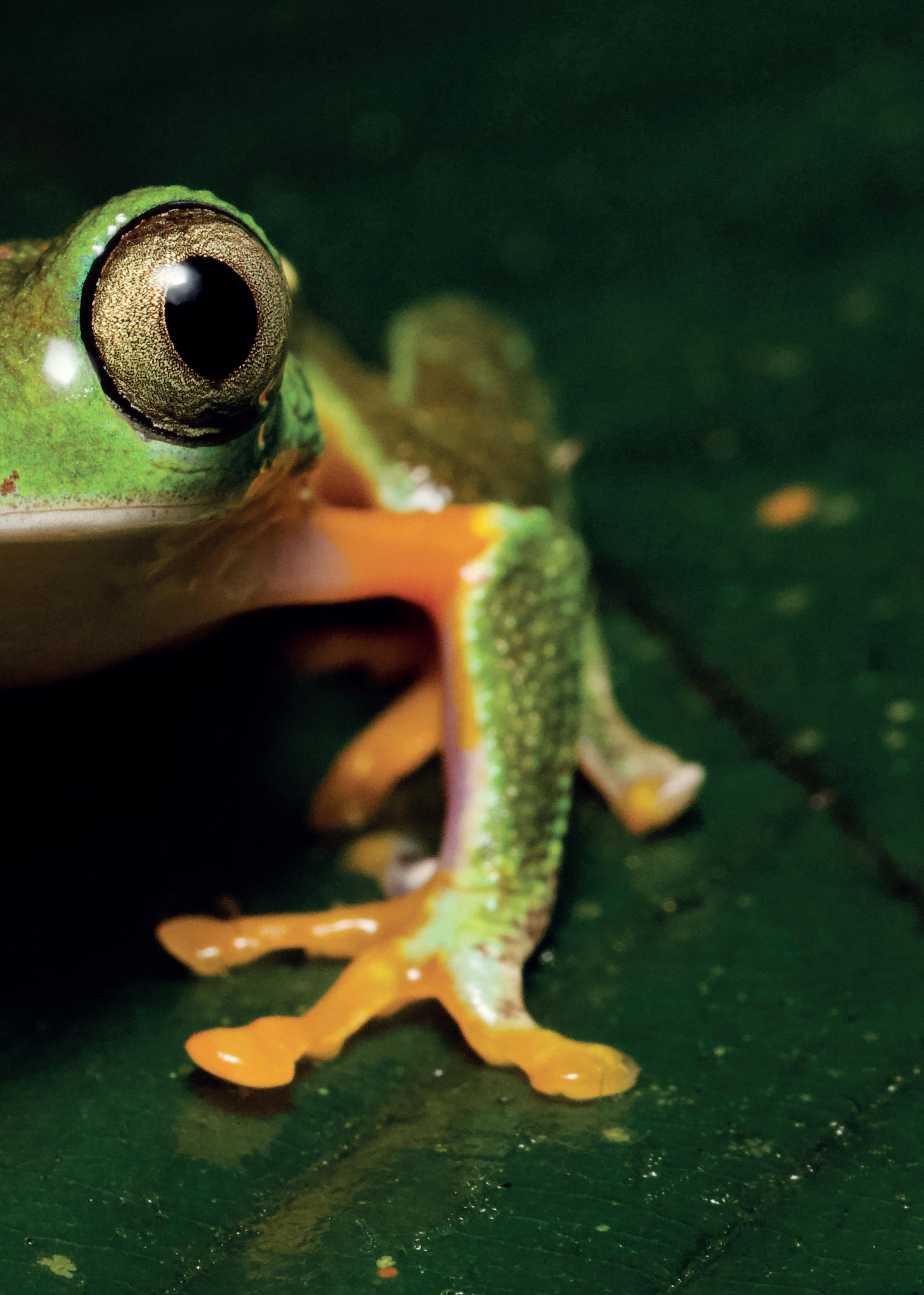
The biodiversity of the Amazon rainforest is almost as immense as its size. Whilst this huge expanse of jungle spans almost a dozen countries and covers an area of 2.7 million square miles, some pockets contain a vast variety of reptiles and amphibians. For the field herper, these reserves are absolute gold mines for photography and education. Recently, I visited the Apayacu Reserve with Herpetologist, Axel Marchelie to learn more about the hundreds of species of herpetofauna that live on the reserve. The following feature discusses some observations and notes taken from the trip targeted towards keepers of exotic species.
Apayacu Reserve is a reasonably small pocket of both primary and secondary rainforest in the Western foothills of the Ecuadorian Andes. Located 25km inland from Tena (the gateway to the Ecuadorian Amazon), it benefits from the lush vegetation and climate associated with the inner Amazon without excessive risk of flooding. Furthermore, it also hosts rolling terrain with elevated regions and steep inclines, along with shallow streams. It, therefore, provides fascinating insights into populations of herpetofauna that favour incredibly specific ecological niches.
Axel has been living and working on the reserve for four
years. His career as a natural history photographer led him to travel much of South America and Madagascar on herpetological expeditions, photographing species to illustrate scientific publications, guidebooks and even travel brochures. His work has helped effectively label a plethora of new species and living almost entirely offgrid in a small wooden cabin at Apayacu, he is already recording some cutting-edge observations on the reptiles and amphibians of the Amazon. Together, we spent two nights in the reserve, finding upwards of 30 unique species and photographing a good percentage of them.

There are three different species of Dendrobatid within the reserve and many more in the surrounding areas. This surprised me, as I thought that many similar species may be sympatric with one another. For example, Ranitomeya variabilis is a common species throughout Tena. It is a beautiful species of “thumbnail” poison frog that is highly adaptable and that I had previously found in gardens and parks close to human inhabitation (even within the city centre). In captivity, we often associate these small species of poison frogs with bromeliads and there is a common rhetoric that suggests bromeliads are all but essential for their captive welfare. This may be true for variabilis which spends most of its time in the water-logged cavities of plants (though not always bromeliads). However, the closelyrelated Ranitomeya ventrimaculata is far more terrestrial in its behaviours, even opting to sleep on fullyexposed broad-leaved plants less than one metre from the ground. Pairs will sleep close to one another, on different leaves (pictured) and females are easily distinguishable by their bulkier size. Many keepers will group the needs of all “thumbnail” poison frogs although these two species do not inhabit the same ecological niche, nor do populations live beside one another. Furthermore, the most common Dendrobatid in Ecuadorian Amazon, Ameerega bilinguis is almost entirely terrestrial. I most encountered this species on decaying wood (during the day) and resting on low vegetation (at night) – as is the case with the Oophaga pumilio populations I’ve encountered in Southeast Costa Rica. Whilst vague observations cannot paint a full picture of a species’ natural history and bromeliads certainly provide an excellent tool for humidity retention within the terrarium (and are likely essential for breeding of many species of Dendrobatids), rotting wood, leaf litter and thick vegetation that grows high within a terrarium should be considered just as important. Having observed several genera of commonly kept Dendrobatid, most seem to occupy rotten logs far more frequently than areas with decorative mosses that are aesthetically pleasing to the keeper.

Another excellent and unexpected find was that of a young rainbow boa (Epicrates cenchria). This species is extremely widespread across Central and South America, with several subspecies having been identified in recent history. There is a common theme echoed across naturalists from Costa Rica to Brazil that “adults are aggressive and juveniles are placid.” This does not seem to ring true in captivity, but one thing that is rarely considered in the captive management of rainbow boas is their close association with running water. They are almost strictly arboreal and tend to be located very close to rivers and streams. Naturalist guides can (with great accuracy) locate rainbow boas in preferential trees overhanging large rivers. Even in Apayuca, where there are no rivers running through, the population of rainbow boas are concentrated near running streams and active during heavy rains. Despite being one of the more frequently-bred of all medium-sized Boids, their natural habitat may be one of the most difficult to simulate in captivity. Add to this that some localities can grow upwards of 6 feet and it may be worth changing perceptions around their care and considering these an “advanced” species to maintain.
One of the most striking of all amphibians and a top target for anyone herping the Amazon is the fringed leaf frog (Cruziohyla craspedopus). Interestingly, this species is extremely widespread in its distribution but also very rare. They can be found in a variety of South American countries but not very easily. Unlike the monkey frogs (Phyllomedusa sp.) which can be found in good numbers around many Amazonian waterways, Cruziohyla are far more cryptic and inhabit the tree canopy. Both species are highly localised, and their presence is often only identified by their calls. However, Axel had identified a population within the reserve that was breeding during the time of our visit. Across the entire 178ha reserve, there were only two locations where the animals could be found.

Private keepers are only just beginning to produce fringed leaf frogs in good numbers in captivity and their care is criminally understudied. Like Dendrobatids, the “tree frog” setup seems somewhat universal. Although there will always be parameters to herpetoculture, using a similar setup for a clown tree frog (Denrosophus sp.) that inhabits low-lying reeds around shallow pools, and a fringed leaf frog that generally inhabits tree canopies
10m high may be problematic. Many keepers will of course add sporadically changing heat, humidity and UV to account for the dynamic environmental changes of the treetops, but as these strikingly beautiful species become more popular, there is certainly room to distinguish between canopydwelling and reed-dwelling frogs in captivity. Although the keeper is limited by the space that they can offer their animals, it will be interesting to see what changes and potentially new technologies arrive as the most beautiful canopy-dwelling species become more popular.
As a western herpetology enthusiast, my attentions when out in the field are largely dictated by colourful and striking species. Many of these are animals that have already been documented extensively and presented to westerners through films, books or photography, or have some presence in the pet trade. I personally seek interesting Dendrobatids, colourful tree frogs and arboreal Viperids, largely because they make excellent photography subjects and are totally alien to the species found in Europe. However, Axel, having spent over a decade in the neotropics was
most enthralled by the drab-coloured Pristimantis species that inhabited the leaflitter beneath our feet. There are currently 605 known species of Pristimantis frogs with more and more being discovered every year. Some are categorised by the IUCN as Least Concern, others are highly localised and considered Critically Endangered and a large portion of them are Data Deficient.
Sadly, there is very little commercial appeal to keep and breed these tiny, unassuming frogs in captivity for the average private keeper. Whilst they may offer a photographer the opportunity to help describe an entirely new species in the wild, that fascination is not translated well overseas. There is certainly a narrative that dictates that visually-appealing species are prioritised in captivebreeding initiatives. Despite so many species requiring additional research into their captive care requirements, even zoos will often prioritise personable or impressive animals for their visitors. Private keepers also frequently focus on species that are appealing to either a wide spectrum of keepers, or are of extremely high appeal to a narrow group of keepers. Naturally, this breeds demand for the most “typically” interesting animals when other species may benefit more from captive care. For example, whilst many Atelopus species are in desperate need of captive breeding and are targeted by smugglers, many organisations are using closely related Rhinella species as “model” for the programmes. If private keepers had dedicated the same time and effort into the less striking Rhinella and produced captive management guides for
less commercially viable species, they may inadvertently allow authorised institutions to fast-track their processes and potentially save an entire species from extinction. Instead, smugglers often target the “high demand” species under the guise of “producing a captive population” whilst depleting natural populations without any plan for the longevity of the species. In my opinion, both private keepers and zoological institutions should seriously consider their contribution to science if they are selecting only the prettiest species from the bottom of a long list of animals that could benefit from their help.
This note is less about the keeper and more a word of warning for those wishing to embark on a herpetological expedition as a tourist. It may go without saying and most enthusiasts will understand this wholeheartedly, but the behavioural repertoire of animals (even those closely related) can be entirely different. In most cases, misjudging an animal's behaviour in captivity could result in a bite, scrape or an escapee. However, venomous animals pose a larger risk.
There are two species of Bothrops in Apayacu. The reasonably famous fer-de-lance, or common lancehead (B. atrox) and the arboreal Amazon palmed pit viper (B. bilineatus smaragdinus). Fer-de-lance are responsible for the most snake envenomations and related deaths in South America. This is largely because of their impressive
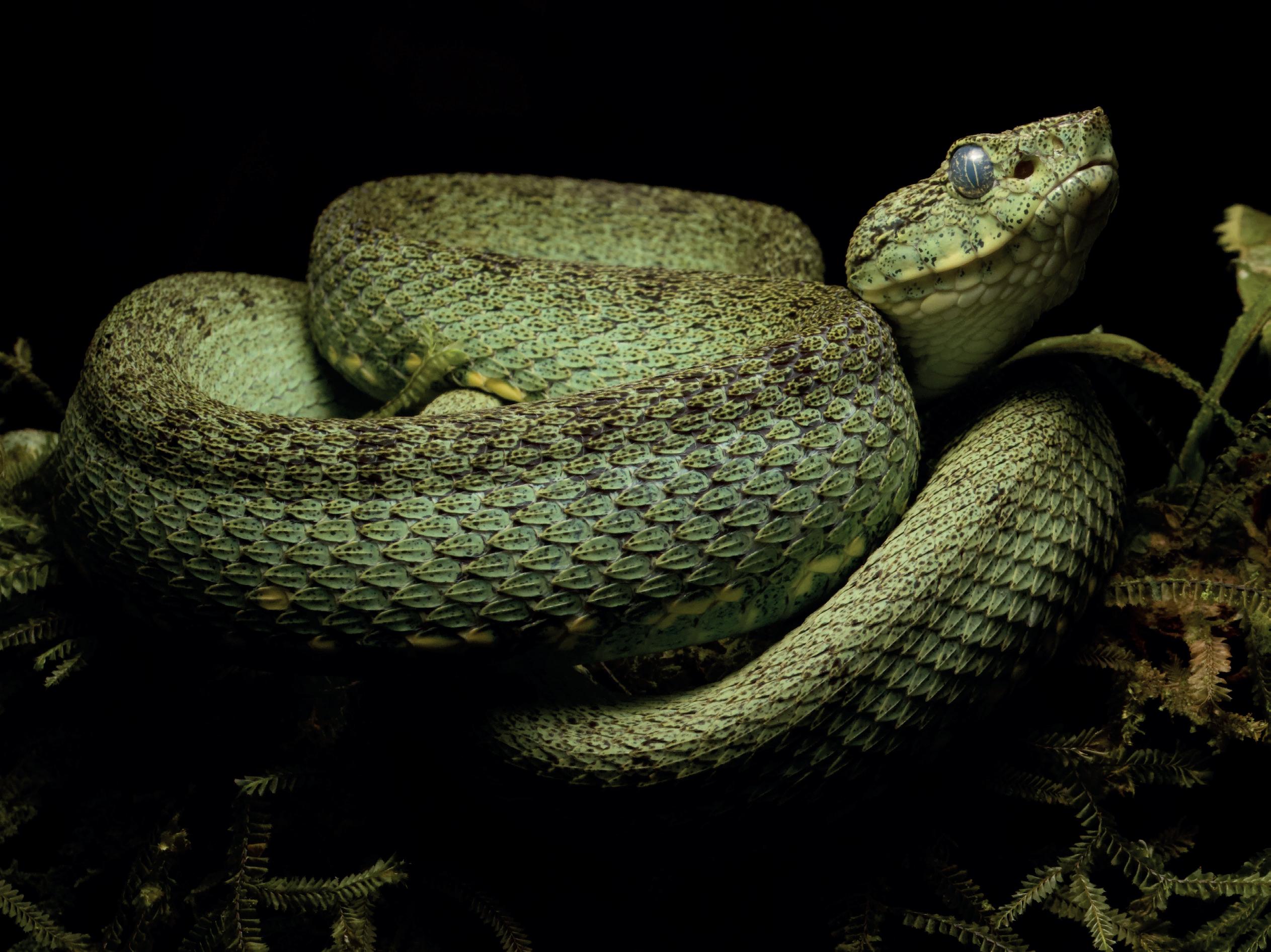
adaptability, occupying suburban and farmland areas as well as primary rainforests at a range of altitudes. They are terrestrial, stationary when in ambush but extremely active when provoked and always a drab brown/green. Their cousin, B. b. smaragdinus is bright green/blue, predominantly arboreal and reasonably stationary when disturbed. However, the Amazon palm pit viper has an immense strike range over half the length of its body and according to Axel, will strike at just about anything that
passes within range. This makes it perhaps one of the most deceptive snakes I have ever photographed and even when taking all necessary precautions, assuming that its nature mirrored that of the (usually) well-behaved eyelash vipers (Bothriechis schlegelii) of Central America and the Choco, was a mistake. Despite both adults and juveniles not attempting to strike, generalisations of animal behaviour (and capabilities) are easy to make. Always heir on the side of caution when working with a new species in any capacity.
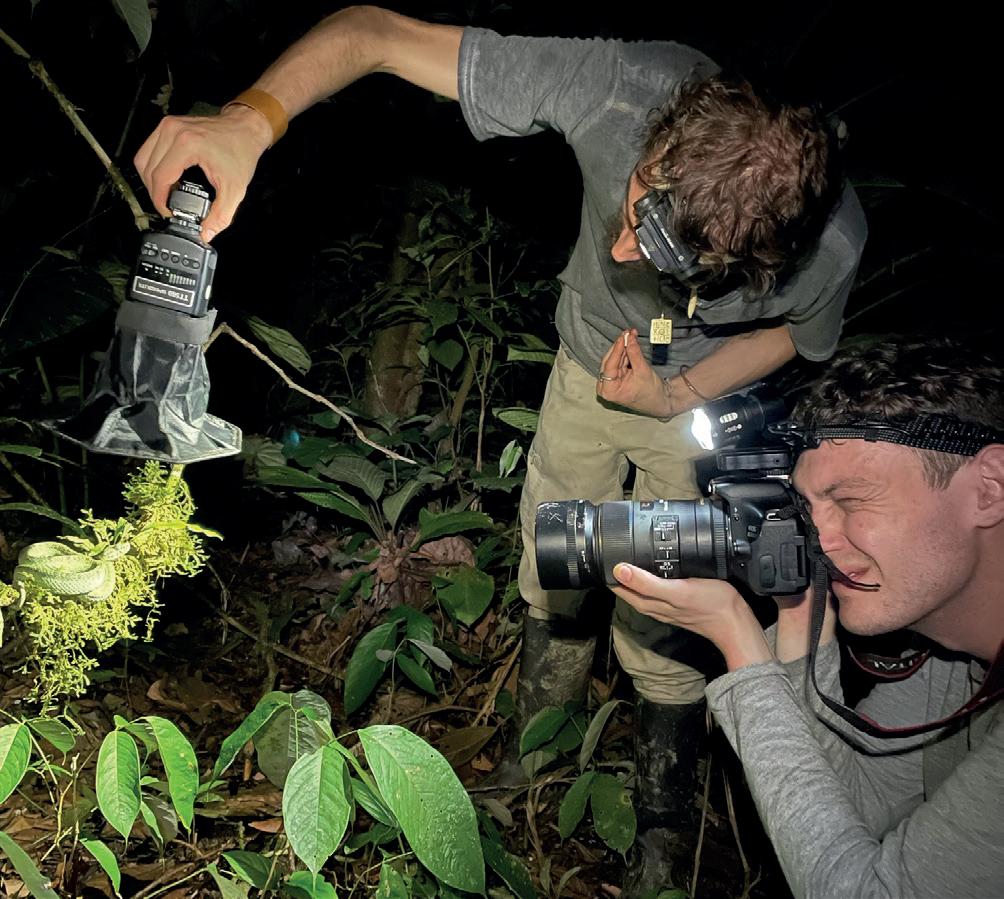

Several driving factors make an animal suitable for captivity. First and foremost, can we provide all its essential needs? Beyond this, conservation status, temperament, aesthetics and more can influence the commerciality and thus the availability of species. All these factors come together to underpin a species’ suitability as a pet or “kept species”. Annoyingly, perhaps the most beautifully natured of all species that we found in Apayacu was Dipsas palmeri – the “Palmer’s” snail-eater. These tiny snakes, like much of their genus are reasonably abundant in their range. Other, closely related species can be found across enormous distributions of the Amazon Basin. Dipsas are generally small in size, incredibly gentle, move only very short distances and are strikingly beautiful. These factors give them the potential to be some of the most suitable pet snakes in the hobby. With the rise of bioactive setups, they would be the ideal candidate for a large, fully-planted enclosure and yet their strict diet of
molluscs means it is highly unlikely that we will ever see them captive-bred in large numbers. Some wild-caught individuals within the genus have been imported in the past and kept with varying degrees of success.
It is difficult to fully disentangle herpetoculture and commercial enterprise. In the case of live foods, fledgling businesses that can bring new readily-available insects into the industry may open a door to better welfare standards through a broader choice of kept species. Seeing an animal in the wild has never evoked feelings around its placement in captivity but reflecting on the herpetoculture aspects of my observations within the Amazon, it appears that some of the most commonly-kept species are far less
suitable than other, almost unheard of, captive species.
Keepers do not have to find a herpetologist doing field work in a remote part of Ecuador to truly understand their animals’ (or prospective animals’) captive needs. Nowadays there are lots of companies offering herpetological expeditions to tourists. As they often require specialist knowledge and are located in the tropics, they may be beyond the budgets of most keepers. However, visiting these regions can invoke and inspire a lot of new thoughts when considering the care of captive animals. Some keepers are influenced by this

context so much that they change perspectives that they have held for decades. Other keepers may make small changes, like adding another few centimetres of leaf litter, or trialling a new plant in their enclosure. Either way, every keeper should look towards nature to inform their keeping practices. Even just reaching out to biologists that work with a kept species in the wild, via social media can be extremely helpful. So much data and information on environmental conditions, wild behaviours and habitat photos are often at the fingertips of keepers who choose to look for them. With social media and ecotourism connecting keepers, biologists and the natural world more than ever, I would urge anyone who keeps exotic animals to make those connections as soon as possible and share that information with others.
This piece is a compilation of observations made within the field that are not scientifically supported. The hobby of visiting wild places in search of reptiles and amphibians is called “herping” and it is a valuable tool when creating a captive environment. Unfortunately, not all keepers can see their animals in a wild setting and there is a severe lack of resources beyond photography that articulates this to the average pet keeper. The statements in this piece are my thoughts and not something that is peer-reviewed or should be taken as an absolute truth. All care considerations should come from a wide range of sources.
Keeping and breeding hippie anoles.


Anolis fraseri, colloquially referred to as the “hippie anole” for its vibrant spectrum of colours, is a large species of Dactyloid lizard. The species is named after British herpetologist, Louis Fraser who was a Curator at the Zoological Society of London in the midnineteenth century. Fraser’s anole hails from the montane and submontane foothills of the Western Andes through North Ecuador and South Colombia. Reliant on ultra-humid cloud forests that harbour cool temperatures, it is a littlestudied and rarely kept species. In fact, Adam Trimmings, a herpetologist and private breeder of reptiles in the UK is thought to be amongst only three people to have ever bred the species outside of Ecuador. In this article, Adam gives us insight into the often-under-appreciated world of anoles.
Many private keepers group “anoles” as a broad category of small, uninteresting tropical lizards. This is potentially due to the mass imports of green anoles (Anolis carolinensis) in the early days of herpetocuture, that gave these lizards a reputation shrouded by commodification. They were exported on mass and with limited technology available to keepers, subpar husbandry often accelerated the lizards’ perilous fates. Now, advances in herpetoculture mean that a wide spectrum of species can be kept and bred successfully by dedicated experts.
With over 425 species within the Dactyloidae family, there is extreme diversity amongst the humble “anoles”. As one of only three known breeders of fraseri, Adam
Trimmings (@AdamsDragons) has learnt a lot about the hippie anole. “They’re just stunning lizards” he told Exotics Keeper Magazine. “They are the largest of the equatorial Anolis and they tend to occupy the high canopy but are often seen on fence posts too, close to human settlements. They are less abundant in the wet season, but they are pretty common in their range.”
Hippie anoles are considered Least Concern by the IUCN despite surprisingly little being known about their wild behaviours. In their home range, new species of Anolis and Dactyloa are being described quite frequently, suggesting that both wild and captive studies could be valuable to our understanding of cloud forest ecosystems.
Adam continued: “Captives are not as bright as wild ones and that’s the same with a lot of cloud forest species. Because their habitat is so niche, they have lots of fog, cool nights and hot humid days, that it is difficult to replicate that in captivity and it does seem to show in the way they look and behave. That’s not to say they’re not happy in captivity but there is something about the wild colours and markings that really stands out.”
Adam has three separate reptile rooms that are divided into climate zones. These include a “montane” room, housing alligator lizards ( Abronia sp.) that can be drastically cooled in the winter, a “tropical” room housing blue tree monitors ( Varanus macraei ) and green tree pythons ( Morelia azurea ) that stays warm year-round and the Anolis room that drops in temperature at night. “Hippie anoles don’t mind the mid to high 20’s (°C) during the day, but they need that drop at night. Being from a reasonably high altitude, the nights are cool. When I bought my house, I planned a room that would allow me to house species like that.

I always opt to heat the ambient temperature of a room, rather than the enclosure. You can cause thermal confusion by adding additional heat to counteract natural temperature drops.”
Being a montane species, hippie anoles are naturally exposed to major fluctuations in their environment. Evenings can be shockingly cold, while daytime temperatures can be surprisingly hot. In Mindo, Ecuador, throughout the year, temperatures can fluctuate between 14°C and exceed 25°C. The high altitude also means that the animals are exposed to high levels of UVB when they are basking in the sun. Furthermore, average rainfall can reach up to 486mm a month. Usually, mornings are hot and dry, while rain is relentless throughout the afternoons and well into the evenings driving humidity levels up and down. Adam continued: “Nature’s not perfect all the time. Animals are exposed to fluctuations and I think in captivity we’re too anal about keeping the margins fine.” He chooses to use the ambient temperatures of his home to create fluctuations in the animals’ enclosures.
“There’s something about these anoles, they’re smart lizards! They’re definitely thinking. I don’t like to go down the whole anthropomorphism thing but they’re definitely tuned in to watching the keeper.”
Adam Trimmings, Reptile Breeder and Herpetologist.One of Adam's enclosure for adult hippie anoles
Cloud forests are extremely lush environments, and the forests of Mindo in Ecuador are no exception. This region hosts hundreds of species of epiphytic plants. Adam’s enclosure utilises a wide range of these including bromeliads, tillandsia, orchids and some mosses and ferns too. Adam uses a fogger that turns on every three hours to increase the humidity. This is combined with a MistKing system that mists the enclosure three times a day (morning, noon and night) to ensure that the humidity remains extremely high. “This really helps hydrate them” adds Adam. “They will naturally breathe this water in through respiration. Anolis are a thirsty genus if their environment is too dry. I’ve noticed that they are far less thirsty by having the fogger and mister than when I would manually spray them. This gives them everything they need and takes the pressure off me too. Generally speaking, all my enclosures are self-maintaining because of how I have set them up. Other than cleaning glass, which is quite filthy simply because of the amount of water being circulated and the algae growth that comes with it, they’re quite low-maintenance animals.”
“Their dewlap is huge. It’s a bright yellow and when you see them displaying it is pretty impressive! Adams set-up utilises a 12% T5 alongside an LED bar for plant growth, a third 13W LED spot bulb and a 35W halogen basking spot (that is removed in summer). “They need LOTS of light"
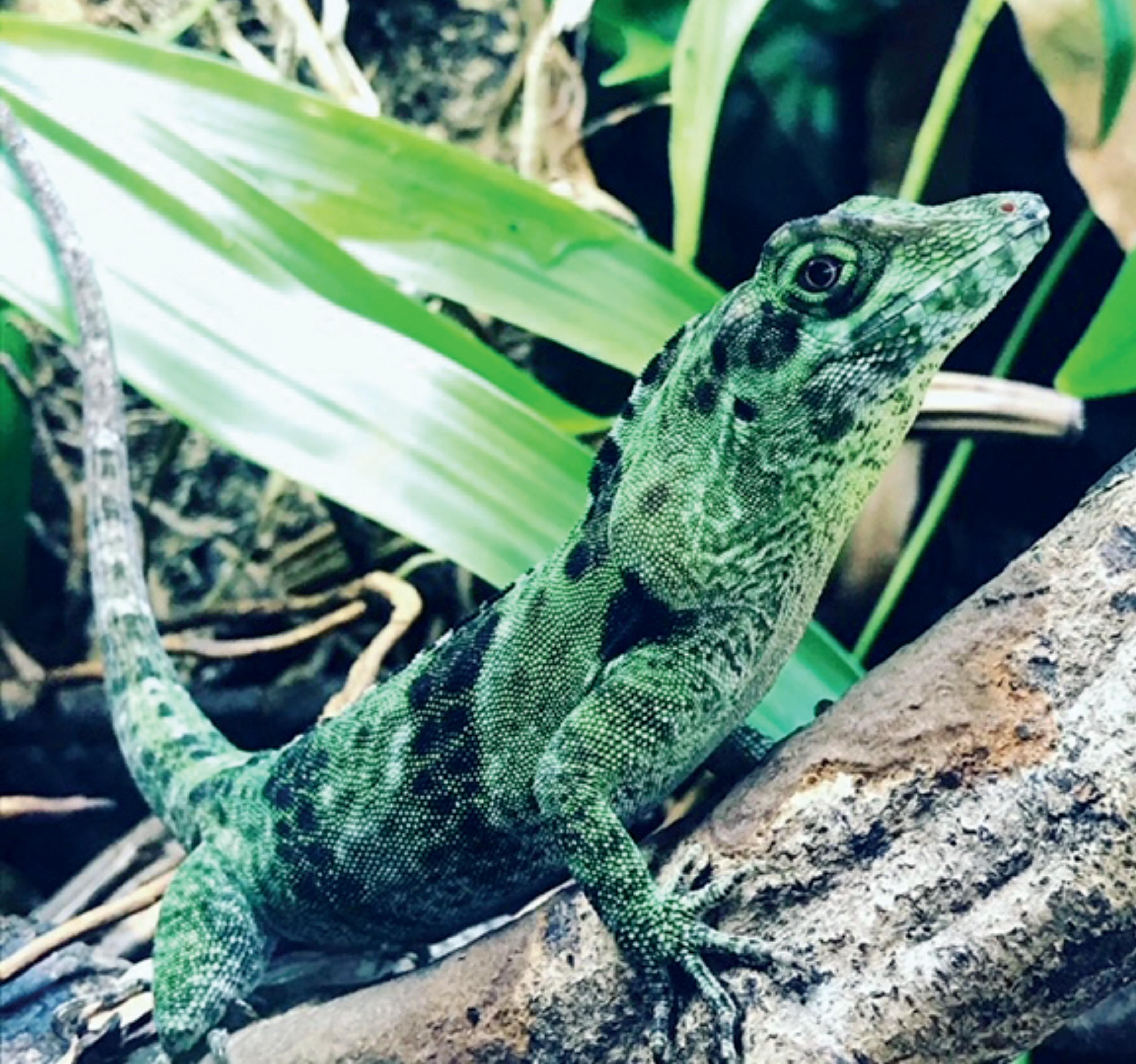
Adam added. "It’s quite sad because people think they’re giving their animals a lot of light and they’re not. When you look into LUX levels, especially in Ecuador, you’ve got to be almost blinding these animals to be giving them anything close to the sunlight they’re getting in the wild.”
The combination of equipment used in Adam’s setup creates basking temperatures of 28°C to 30°C with ambient temperatures of around 22°C to 24°C. By using a 12% T5 he offers a good amount of UV, whilst also giving the animals choice to move further from and closer to the lighting.
Adam originally acquired a young wild-caught pair from an Ecuador import around four years ago. He explained: “Unfortunately, the male began to deteriorate. Looking back, I think it was because of the temperatures I was keeping them at. Once an animal like that gets ill, it’s really hard to bring them back around again. So, I was left with the female who was doing fine. One day I walked in and saw a baby, which, I’m told, was the first captive-bred Anolis fraseri outside of Ecuador. So, she had laid an egg somewhere in the enclosure that had incubated in situ. Bear in mind, the incubation period for this species is up to 6 months, so I must have been doing something right.”
Adam soon found more eggs, which he chose not to
artificially incubate and instead secure in a tub that could be easily monitored and placed back into the enclosure. “I fed the hatchling with easily-digestible foods, micro crickets and fruit flies, etc and he’s grown on to be the subadult male that I have today. He’s now paired with a female that I sourced from a friend and I’ve seen plenty of copulation between the two. Unfortunately, the female is slugging out a lot. Like many reptiles, the female will continue to lay infertile eggs. With fraseri, they lay a single egg, not a clutch. She was producing quite a lot of infertile eggs.”
Adam continued: “As I had seen a lot of copulation I thought, perhaps she just doesn’t have enough laying sites. These anoles don’t lay on the ground in soil, they will wedge eggs amongst root systems and orchids and other platforms. I thought perhaps she’s not wasting the viable sperm on eggs when she doesn’t have anywhere to lay.” To solve this issue, Adam added a few small green plant pots

containing a mix of soil, vermiculite and moss to different locations around the enclosure at different levels. In doing so, he offered the female a range of microclimates of varying temperatures and humidity to lay her eggs. Eventually, the female chose to lay her egg in the highest plant pot. “A few days after adding the pots, she was in it!” Adam added.
“Some reptiles are fine being incubated at a steady temperature, but cloud forest species need a good 5°C drop even during the incubation stage. When people incubate reptiles –and I’m talking about any species here – in the mid to high 20s you almost rush it out of the egg. The incubation period is probably drastically reduced than if it’s given a slow and steady development process.”
There are numerous species from a variety of climates that benefit from controlled fluctuations in their incubation period. Parson’s Chameleon
(Calumma parsonii) eggs can take up to 600 days (almost two years!) to hatch. They are the reptile with the longest incubation period and therefore, despite living in regions with relatively stable conditions, it is paramount that the breeder provides seasonality to mimic what would be happening in Madagascar over that time. Even species with very short incubation periods may experience drastic changes in temperature and humidity as weather, seasons and other environmental factors change.
“I believe there are only three of us in Europe that keep the species, as the other pairs went to two German keepers. They’re doing really well with them and have produced a lot of captive-bred animals now! They’re a tricky species to breed. Because they only lay one egg a month and go through seasonal changes where the female doesn’t lay, it could be only 8 – 10 eggs a year, so they’re a slow species to work with.”
A varied diet is an important and often overlooked aspect of reptile husbandry. In the montane regions of Ecuador where the hippie anole resides, seasons bring an abundance of different species at different times of the year. The lizards have evolved to factor this into their biological makeup. “If people can take anything home it’s that variety is the spice of life” added Adam. “In certain seasons, certain prey items will be abundant. So, for example, in the summer months when there are a lot of pollinators, you can add things like bee pollen to your live food because naturally, they will receive that in the wild.”

In the cloud forests of Mindo, there are seasonal fluctuations in insects like mosquitos. Equally, small-sized arthropods and caterpillars may be more abundant at certain times of the year. This can be replicated by adding new livefoods, allowing old livefoods to metamorphose, or changing the size of the livefood.
As with any reptile, gut-loading is an extremely important aspect of providing a nutritious diet. There are a lot of pre-made formulas designed to give the feeder insects the best possible nutrition, but those that add raw fruits and veggies as extra moisture should be conscious to alternate the food sources. While a piece of cucumber may be an obvious choice for hydration, it is not very nutritionally rich and therefore, a wide mix of carotenoid-rich foods such as squash, carrot, beetroot and more, combined with different leaves and fruits can lead to a healthy spectrum of vitamins and minerals. Adam continued: “If you’ve only got 10 species available to feed to your captive, well, as
long as you are giving those species a wide variety of foods, you are still providing variety to your animal” adds Adam. “I like to think of crickets like a sandwich. It’s what’s inside the sandwich that matters.”
With such a wide diversity of anoles available the care and keeping of Anolis species is an area of herpetoculture that even the most dedicated herpetoculturists have barely scratched the surface of. With more and more countries holding total bans on the exportation of wildlife, opportunities to keep and breed unusual species and learn more about these fascinating lizards are naturally dwindling. Although wild-caught animals should be reserved for experienced herpetoculturists who are likely to succeed in propagating the species within captivity, captivebred Anolis can make for some fascinating pets and share some of the desirable traits that have seen poison frogs (Dendrobatidae) rise in popularity in recent years.
Adam concluded: “I think anoles are becoming a LOT more popular now! The diversity is just insane. There are so many species and even localities of species that can be kept. With the way the energy crisis is going, they’re perfect reptiles to keep. People seem to be focusing on the smaller, quirkier species than the ones that require a lot more space, heating and lighting. They’re interesting animals to observe and have unique characters. You get to see these cool little behaviours such as the males displaying. There’s something about these anoles, they’re smart lizards!”
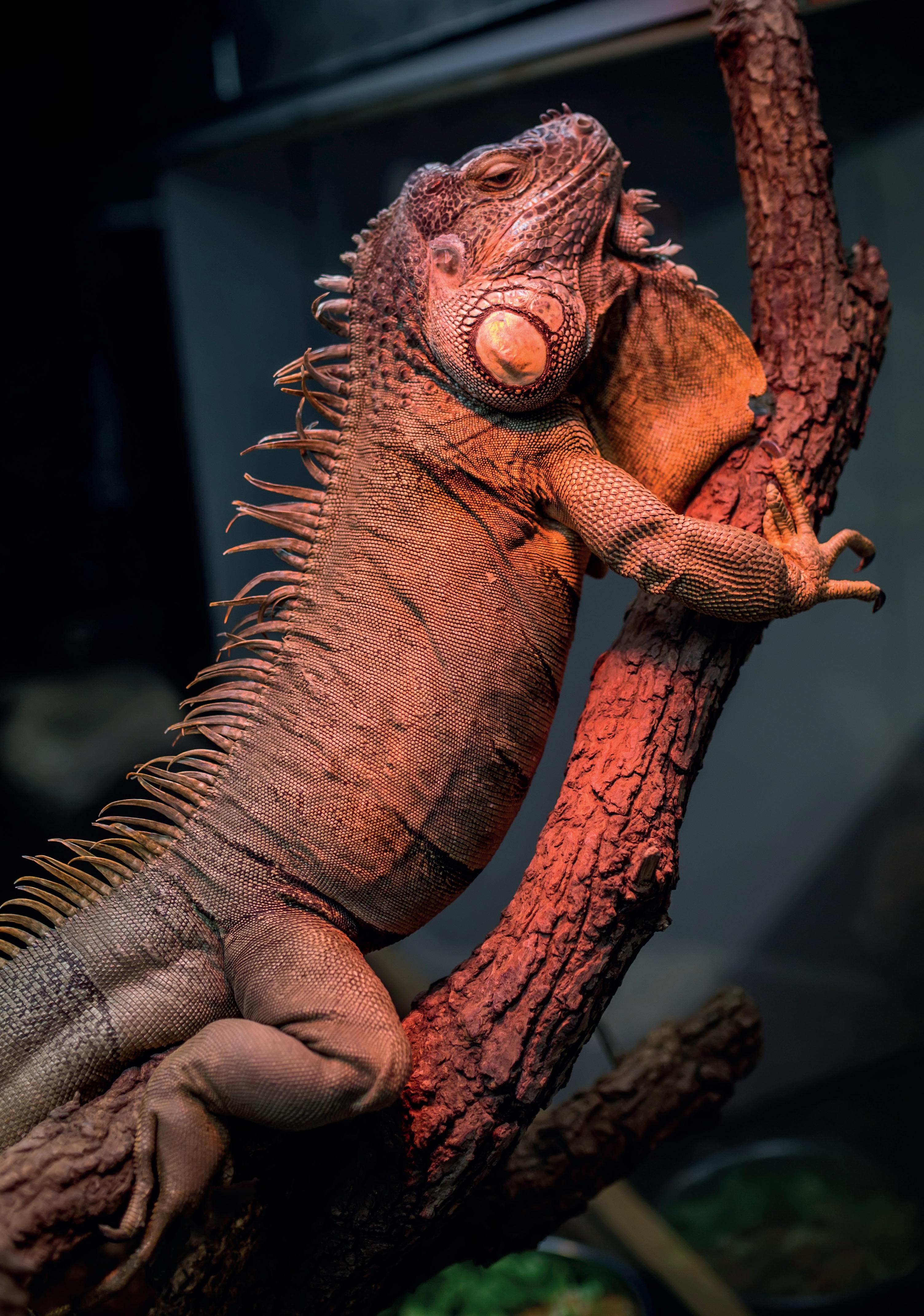
We have covered a lot of topics in the “Keeper Basics” feature of Exotics Keeper Magazine, but one oftenoverlooked aspect of enclosure design is the effective installation of technologies. Keepers must know how to position their electrical components, as even the most high-quality and well-suited technologies are futile if used incorrectly. An excellent combination of bulbs is worthless if they are positioned wrong and a thermostat could be dangerous if placed in the location within the enclosure. This feature takes a look at basic technologies and how to position them.
The misplacement of lighting possibly holds the greatest consequences for the animal’s well-being. There is a whole spectrum of methods to provide adequate heating and lighting for captive reptiles and amphibians. The most suitable will invariably change for each species and keeper and a “one-size-fits-all” mentality can be rather dangerous to the keeper. However, the most popular method most appropriate to the most commonly-kept species of reptiles in the UK is to use a UVB-emitting T5 or T8 tube alongside a basking lamp (usually in the form of a good quality spot bulb). Together, these provide a suitable slice of the light
spectrum emitted by the sun. The tube emits important ultraviolet rays that are beneficial to the metabolism and overall vitality of the animal, while the basking lamp emits Infrared rays that heat the animal and allows it to thermoregulate. Within these “ultraviolet” and “infrared” categories are different wavelengths that have different properties and functions (you can read more about them on the Exotics Keeper website in our “Guide to Lighting” and “Guide to Heating”), but essentially each bulb represents a slightly different part of the sun. Both also produce visible light, which is another slice of the sun.
In the wild, the animal will receive all three elements (plus quite a lot more we’re only just beginning to understand) from sunlight. A sunny rock, for example, will receive ultraviolet, infrared, visible light and more that is termed “full spectrum”. So, when the animal exposes itself to the sun, it receives all at once. A desert-dwelling lizard will know that when it reaches a certain temperature (from IR radiation) it has also most likely received an adequate amount of UVI (ultraviolet). However, in captivity, a
“basking spot” that is situated too far away from the UV source means that the animal must compromise on either IR or UV. If a UV light source is placed on one end of the enclosure, but the heat-emitting lamp is placed on the other side, the animal cannot receive adequate amounts of either. Therefore, it is important to position the UV source close to the IR source. A reflector can be used to ensure that the area that the animal basks, also receives the most appropriate amount of ultraviolet from the T5 or T8 tube.

In the same way that the lighting fixtures must be positioned close together to mimic the sun, heating products should also be used in conjunction with one another to reach the desired effect. Most spot bulbs do not create a large enough basking spot for an adult bearded dragon (or other similarly sized lizards). Instead, they must be accompanied by another heat source to extend the basking area to a size that covers the animal's entire body. By placing an infrared heat projector as close as possible to the spot bulb, it is possible to create a large, hot basking area. Providing the UVB-emitting T5 or T8 is also positioned correctly to ensure that the basking area has the correct exposure to UV for the animal, it is possible to loosely mimic a “sunny patch” from the species’ wild environment. Infrared heat projectors can not only increase the size of a basking spot but also the temperature of this spot. All heat and light sources must be concentrated in such a way that the animal can receive the appropriate amounts of radiation from each. Once the animal has received everything it needs from this artificial “sun” it
can then retreat, or simply move to a more preferably microclimate within the enclosure, much like most reptile species would in the wild. Sadly, misplacing electronic components can lead to lethargic lizards that spend all day under a basking spot desperately trying to absorb UVB or trying to heat parts of their body that are simply not exposed to the correct levels of heat. A solar meter and a reliable temperature gun can give some reassurance here. Although solar meters are an expensive investment for the average keeper, it is worth asking your local reptile shop, friends or family to borrow one. Whilst they are an excellent tool to monitor a lamp’s effectiveness over time, they are even more important during the positioning stage of building an enclosure. Even borrowing one for an hour while you install the lighting fixture will ensure that you have got the lamps in the right place. Laser thermometers, on the other hand, are very affordable and should be considered essential for the husbandry of any “sun worshipper” reptile. Try to take readings across the entire basking spot to measure its reach and compare this to the size of the animal.

“Ambient” temperature usually means the average temperature in the enclosure, which in most cases is best measured as the coolest temperature within the enclosure. If a basking spot reaches the correct temperature that your animal needs, to find the gradient within the enclosure, you need to measure the lowest temperature in there. Sure, there might be slightly cooler microclimates within hides, or amongst moss but the thermometer should be placed in the coolest location. Equally, if a hygrometer is used, it is worth placing it in the driest location if your animal requires high humidity, or the most humid location if your animal requires low humidity. This will help the keeper establish the bottom line for environmental control. However, the best option is to have multiple thermometers and hygrometers across the enclosure. One to record “highs” and one to record “lows”. It is possible to pick up a reliable thermohygrometer for less than £10 these days, so having two in different locations across the enclosure is inexpensive and provides excellent insight into the environmental conditions of the setup.



A thermostat is not just a temperature control unit but a lifeline to prevent overheating within the enclosure. This means the thermostat should measure the hottest part of the enclosure. In a low vivarium, the basking spot will most likely be on the ground or on some low-lying décor and therefore, the thermostat probe can be placed directly under the basking bulb. In an arboreal setup, the basking spot will no doubt be higher up, perhaps on a complex set of branches under the light. In this case, the probe must be fixed higher in the enclosure, to take an accurate reading of this spot. If, for example, the thermostat is placed on the floor of an arboreal setup, it may read temperatures far lower than the bulb is actually emitting and allow for the bulb to overheat to unsafe levels. A general rule of thumb is to place the probe in the warmest area, so even if an external heat mat is attached to the outside of a terrarium, it is worth positioning the probe within the enclosure but as close to the heat mat as possible to ensure it works safely and effectively.
Setting up a misting system can be a bit of a task, but once it’s done it saves the keeper so much time and worry when compared to using a manual spray method. However, it is important to position the nozzles at the front of the enclosure and direct them back within the enclosure. A full misting system often requires the keeper to penetrate the mesh lid of their enclosure so once they have chosen where the nozzles will be located, there is no going back (unless they buy a replacement lid). Positioning the nozzles at the front, facing backwards will limit the amount of water that reaches the glass on the front of the enclosure. This, in turn, will reduce the amount of mineral build-up and watermarks that the keeper will have to clean. Try considering this when positioning any equipment that will direct water into the environment.
I am very excited to announce to the readers of Exotic Keepers Magazine that we are launching a monumental project that has the potential to change the reptile industry forever. It is called the Ball Python Deep Dive Project. It is like nothing keepers have ever seen before!
This is an episodic docuseries. This is science woven into a story, a journey of discovery, all centered around ball pythons. It will span an estimated five episodes each spanning up to 90 minutes long.
The docuseries will set the viewer up with a full understanding of animal welfare science before the rest of the series delves into discovery. We want to take the viewer on a journey of the history of ball pythons, the story of the original expedition that discovered the species and where the original collected animals are still kept today.
The history of them in zoos, coming into herpetoculture, the boom of morphs and the rise of their popularity. Then we want to show you ball pythons under the lens with camera footage of how ball pythons act in large enclosures and floor to ceiling vivariums.
But this isn't just a documentary, we are doing real science.
We want to include all the relevant studies on ball pythons to date, and weave it into the story. We are utilising what is called boolean search terms to find studies and then grade them against our preselected exclusion criteria to give people a birds eye view of all the research that they never had before.

As part of the project we are partnering with Snake behaviourist, Lori Torrini of Behaviour Education, to create an international study on ball python enclosure use, using something called the Spread of Participation Index (SPI), this will give us an index of how equally the ball pythons are using their enclosures AND what resources they most value. This has not been done on ball pythons before.
A minimum of 20 Python regius will be placed each into a 4x2x2 enclosure arranged in a specific manner to comply with our study design. Layout, substrate, lighting, heating, and enclosure furnishings will be identical for all study
animals. Using cameras and human observation, data will be collected for a Spread of Participation Index (SPI). Each enclosure will be divided into zones and a formula is used to assign use values to each zone allowing us to get an overall picture of how the animals are utilizing their habitat.
This study is designed to investigate how Python regius utilize enclosure space under captive management when given opportunities to exercise agency over their behavioural choices. Collecting data on enclosure use and preferred furnishings and generating an activity budget based on behavioral observations can inform keepers how to manage captive Python regius in a manner most likely to optimize welfare.
We will also be documenting the journey story of an individual ball python and her change from rack life to vivarium life. We will be working with veterinary assistance to see what happens to her body throughout her journey. How will her muscle density change? Her body condition? Her blood parameters?
Finally, we want to analyze all the footage and interpretations from other wild videos, extract the data from studies and then we want to go to Africa and try to fill in the blanks.
We want to go to Ghana with a team of professionals and film ball pythons during the wet season! We want to collect microclimate data, power density readings, ultraviolet index readings, surface temps and humidity readings. Essentially, as much data we can collect from outside the dry season as possible.

Let's not just go to anthropogenically altered habitats, let's go to the forest. Let’s see what we find. Will there be so much flooding that ball pythons are forced to climb or refuge, or are they just moving in their environment? Either way we will show what we find.

This is something of an order of magnitude that has never been done before. We want to set a new bar for reptile content and create something showcasing the best of reptile keeping and what represents our pets.
This is an expensive undertaking and fundraising is already underway! As of writing this we have raised nearly £2000 towards the overall project and it is excitedly etching forward towards making this a reality for the hobby. If you would like to help out and be a part of the project please visit the fundraiser: www.gofundme.com/f/ball-python-deep-dive-project
Make your submission - www.survey.exoticskeeper.com
The Exotics Keeper survey has been running for over two months now and we’ve built a sample size of over 6,000 participants. Whilst we are still a long way away from capturing the UK exotics keeping hobby in its entirety, we can start to make some interesting presumptions about our hobby. For example, at the time of writing, there are far more female keepers than those of other gender identities. We’ve found that amongst almost all the top 10 most popular reptiles and amphibians (apart from Panther chameleons), females make up most of the keepers. However, males are more likely to keep a collection of different species.
We have also counted 1,110 unique species in the UK alone and a further 155 species listed in other countries. This includes reptiles, amphibians and invertebrates. Lizards make up the most diverse group, followed by snakes then invertebrates. Some data is quite problematic, for example, the average number of animals kept by each keeper is 29.1. However, we’ve had many keepers list hundreds of isopods, cockroaches and amphibians (supposedly froglets or efts) so this will be somewhat warped. Collating these numbers has allowed us to be more sceptical of previously predicted numbers of animals being kept in the UK. Other initiatives have required upscaling to depict the number of

exotic animals being kept, but the sample size was often built up of long-time keepers that had large collections of animals. We are now working closely with the Federation of British Herpetologists (FBH), the National Centre for Reptile Welfare (NCRW), the Reptile and Exotic Pet Trade Association (REPTA) and more to figure out the true number of reptiles or amphibians being kept.
We will be updating EK readers with the latest news from the survey via social media. Of course, our results are constantly changing so please follow our social media pages to keep in the loop. We are working with an independent data analyst and whilst this survey will continue for many more months before we can publish an official report, we are delighted to be able to share brand new insights into the hobby with the heart and soul of the hobby itself; you!
Please continue to support our survey, share our updates and tell your friends!




